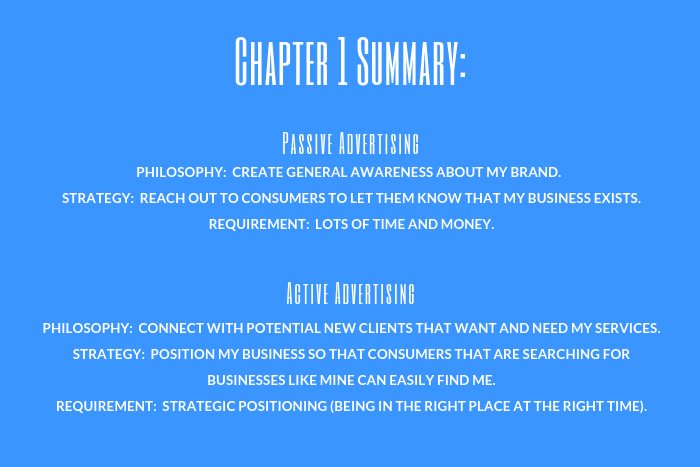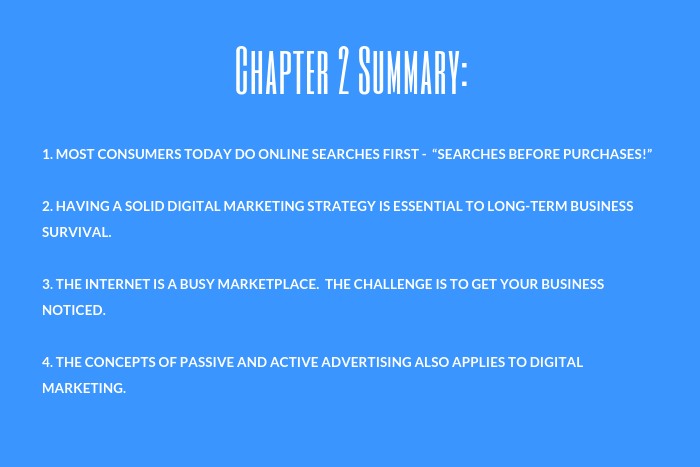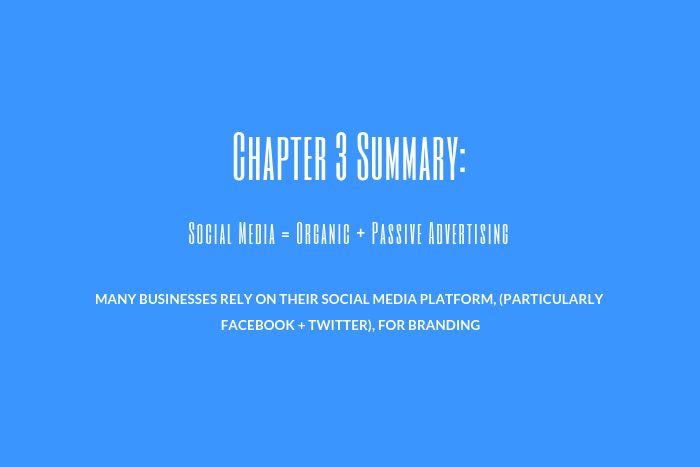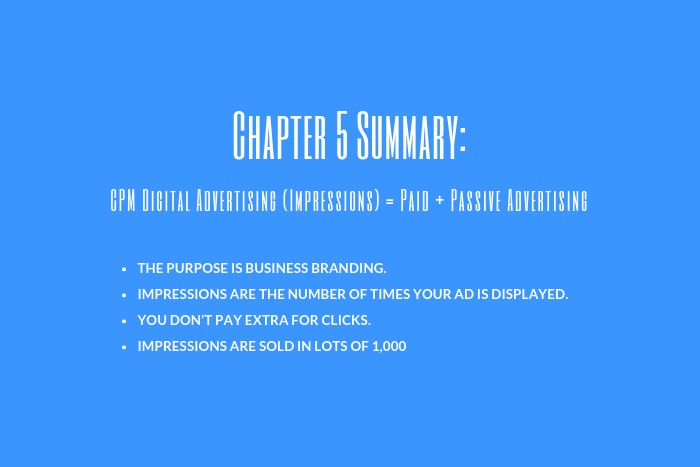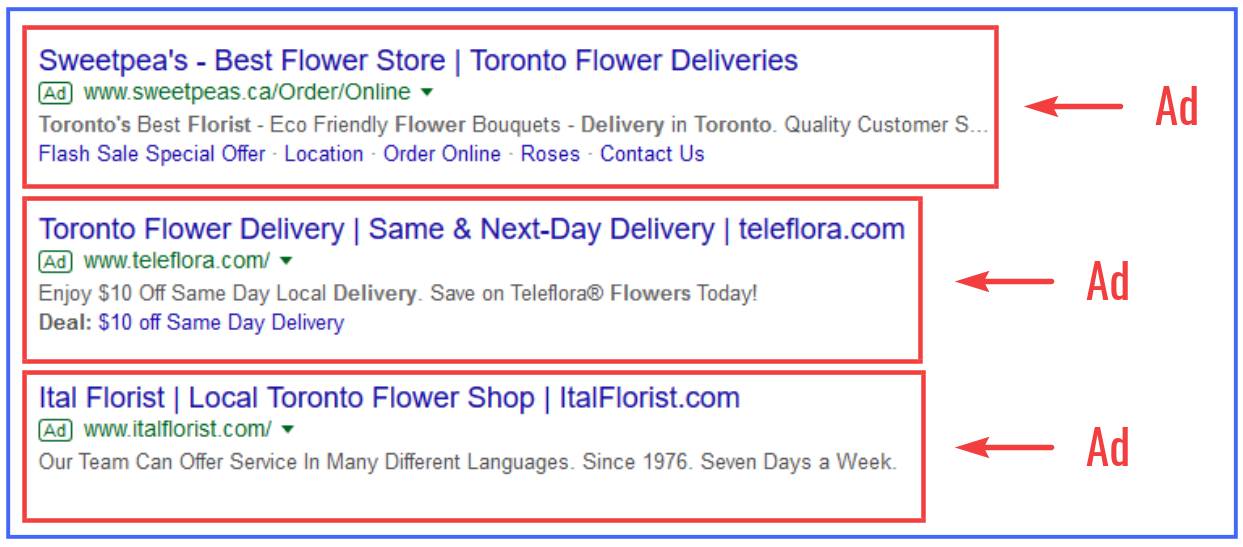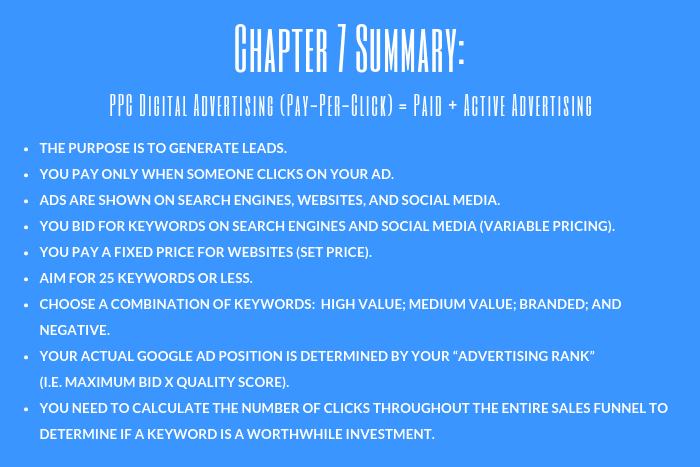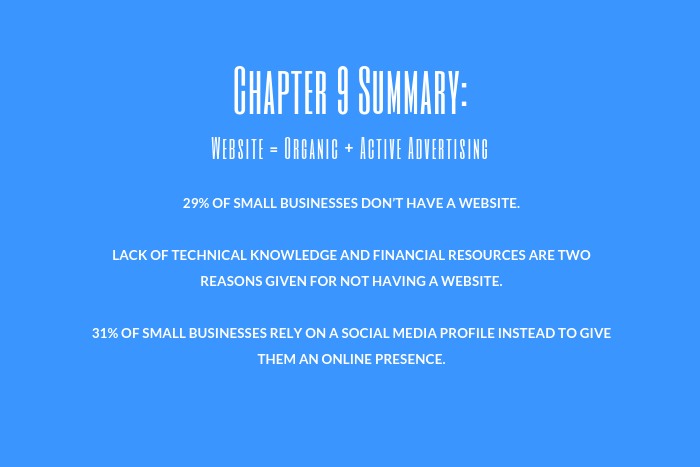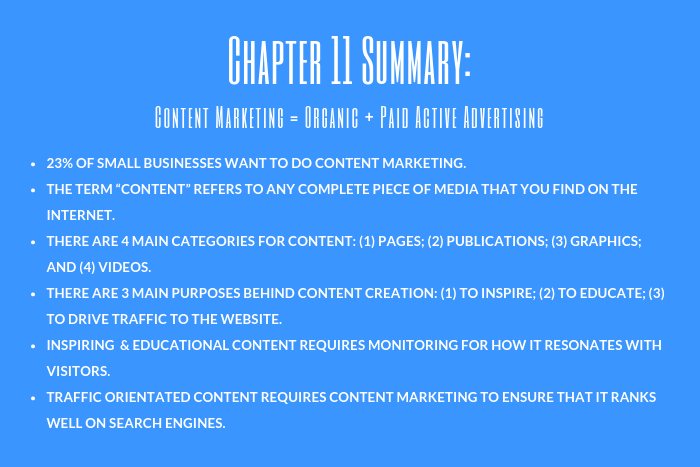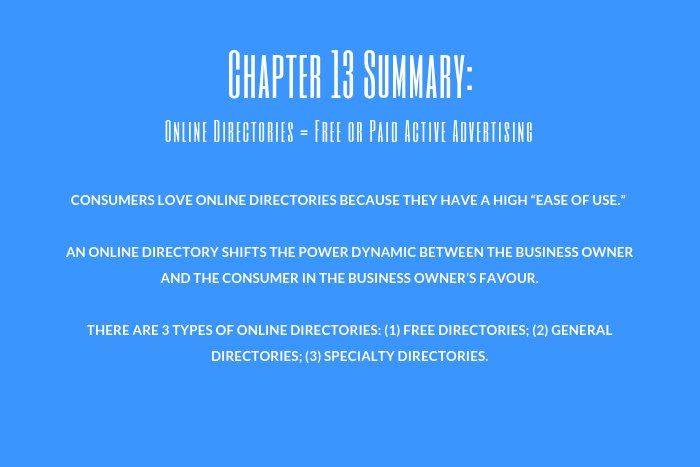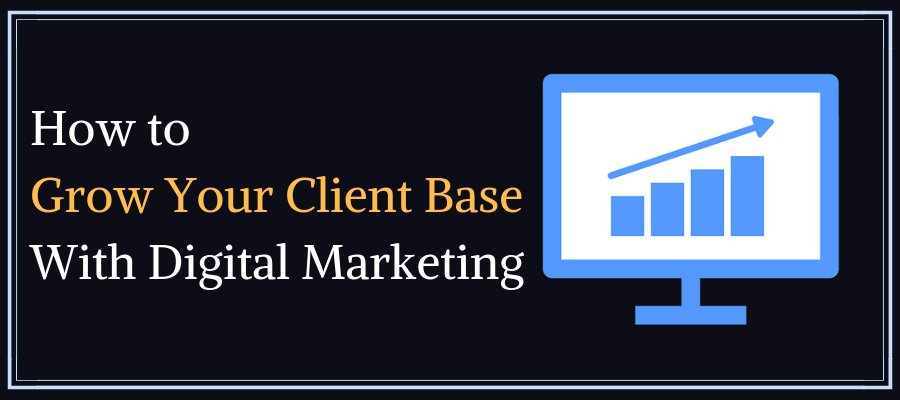
This Ultimate Guide on flower shop advertising will show you different online options for how to grow your customer base.
The best part?
We’ve summarized literally 100’s of hours of research on online marketing for a flower shop in one centralized guide that’s easy to use.
You’re going to learn about different marketing ideas that can be used to take your flower shop to the next level.
You’ll also discover which digital marketing platforms are the most profitable and which have the most pitfalls. (We’ll go through the math with you, step-by-step.)
Let’s get into it…
Tables Summarizing Flower Shop Advertising
For those of you that want the findings straight away, here are 2 summary tables:
- Table summarizing 8 flower shop digital marketing options.
- Table comparing the average cost per lead of 3 advertising methods that are popular with florist businesses of all sizes.
Digital Marketing Options
This first table not only shows 8 different flower shop advertising options, it also shows which digital marketing options are probably the best ones for your florist business, given practical considerations like the size of your advertising budget and the technical level of difficulty required to implement the option.
(If you want to learn more about any particular marketing method, click on the link in the table below and be taken to the start of the chapter.)
VS. ACTIVE ADVERTISING** | $-$$$ | ||||||
| Free Social Media | Passive | 0 | Low | Low | |||
| CPM (Impressions) | Passive | $ | High | Low | |||
| PPC (Pay-Per-Click) | Active | $$$ | High | High | |||
Your Website | Active | $$ | Medium | Medium | |||
Content Marketing | Active | $$$ | High | High | |||
Free Directories | Active | 0 | Low | Low | |||
General Directories | Active | $$$ | Low | Moderate | |||
Specialty Directories | Active | $ | Low | HIgh | |||
* Passive Advertising = building brand recognition + loyalty over time
** Active Advertising = connecting with consumers that are specifically looking for your services at a time they’re ready to make a purchasing decision
*** There is no accepted industry definition of what constitutes a small, medium and large florist business. We definite a small floral business as a business that generates less than $250,000 in annual revenue; a medium-sized floral business is one that generates between $251,000 and $500,000 in annual revenue; while a large floral business generates over $500,000 in annual revenue.
Cost Per Lead
The Cost Per Lead (or CPL) metric measures how much it costs your florist business for one potential customer to take some form of action after seeing your advertising — like calling your business phone number, filling out a contact form, or visiting your flower shop in person.
(Obviously, not everyone who sees your ad is going to take some form of action. They may have not found your ad persuasive, or may have preferred a competitor’s ad.)
Once a potential new customer has contacted you, it’s then up to you and your staff to convert him or her into a paying customer.
The formula for calculating CPL is: marketing spend divided by the number of new customers acquired by marketing spend.
This next table compares the average cost per lead in large cities of 3 advertising methods that are popular with florist businesses:
| Google Ads | $17.00 - $257.00 | $88.00 |
| Yellow Pages | $8.00 - $162.00 | $46.00 |
| Love Lives On Business Directory | $3.00 - $14.40 | $7.80 |
Sources:
About the Author

I’m Sarah Dickinson, the Founder of Love Lives On.com.
Before we dive into the material you’ll find in this definitive guide, I want to answer the question that you’re probably thinking…
“What is Love Lives On, and what do you know about how to get customers for my flower shop?”
Love Lives On is a one-stop website that has everything to do with end-of-life issues.
Not only do we have the best library of content on funeral planning that can be found on the web today….
…we also direct families looking for funeral flowers and sympathy bouquets to reputable flower shops in their area.

Since we launched our site a little over 2 years ago, we’ve experienced VIRAL GROWTH.
Our traffic volume has consistently grown by a factor of 4 when compared to the same month during the previous year, making us one of the fastest-growing websites for end-of-life issues.
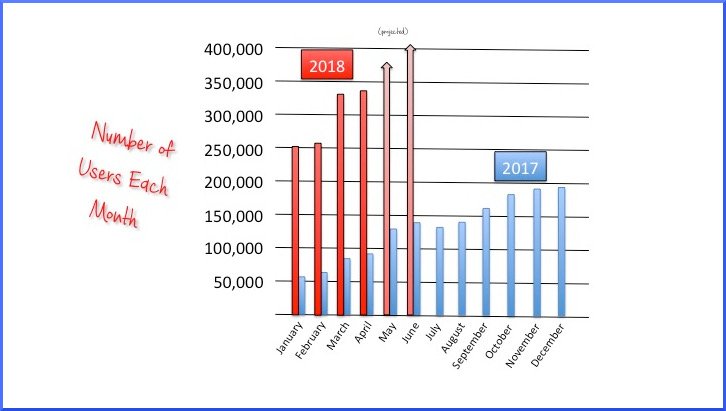
In fact, we achieved 9.7 MILLION users per year by the end of 2018. (We were predicting to grow to 7 million, so we surpassed our own expectations!)
We’d love for you to also experience success when it comes to growing your florist business, which is why we’re going to share our insights on the topic that we’re experts in — digital marketing.
Love Lives on is the leading expert on digital marketing for the florist industry.
Here are the topics that we cover in this definitive guide on how to get customers for your flower shop in case you’re searching for something in particular…
Table of Contents
Chapter 1: Traditional Flower Shop Advertising
Chapter 2: Digital Flower Shop Advertising
Chapter 3: Introduction to Free Social Media Marketing Florists
Chapter 4: Pros + Cons of Free Social Media Marketing
Chapter 5: Introduction to Impressions-Based Flower Shop Ads (CPM)
Chapter 6: Pros + Cons of CPM Flower Shop Ads
Chapter 7: Introduction to Pay-Per-Click Flower Shop Ads (PPC)
Chapter 8: Pros + Cons of PPC Flower Shop Ads
Chapter 9: Introduction to Flower Shop Websites
Chapter 10: Pros + Cons of Flower Shop Websites
Chapter 11: Introduction to Content Marketing for Florists
Chapter 12: Pros + Cons of Content Marketing
Chapter 13: Introduction to Florist Marketing Using Online Directories
Chapter 14: Pros + Cons of Free Directories
Chapter 15: Pros + Cons of General Directories
Chapter 16: Pros + Cons of Specialty Directories
Chapter 17: Why Funeral Flowers and Sympathy Bouquets are Growing Markets
Chapter 18: Conclusion on Florist Advertising
Chapter 1: Traditional Flower Shop Advertising
Online advertising sounds like a great idea, right?
Everyone is harnessing the power of the Internet to boost sales, and, like any other business, you want to do the same.
But how do you do that?
Before we dive deep into the world of digital marketing, let’s quickly review traditional forms of marketing a florist business.
No doubt you have already used one or all of these methods in the past, so they should be familiar to you. (Stick with us, you’ll see the cross-over to digital marketing shortly.)
What PASSIVE Advertising Models Has Your Florist Business Used?
Here’s some examples of commonly-used marketing strategies for flower shops.
What’s important to note here is that different forms of advertising stem from different philosophies about how to attract new customers.
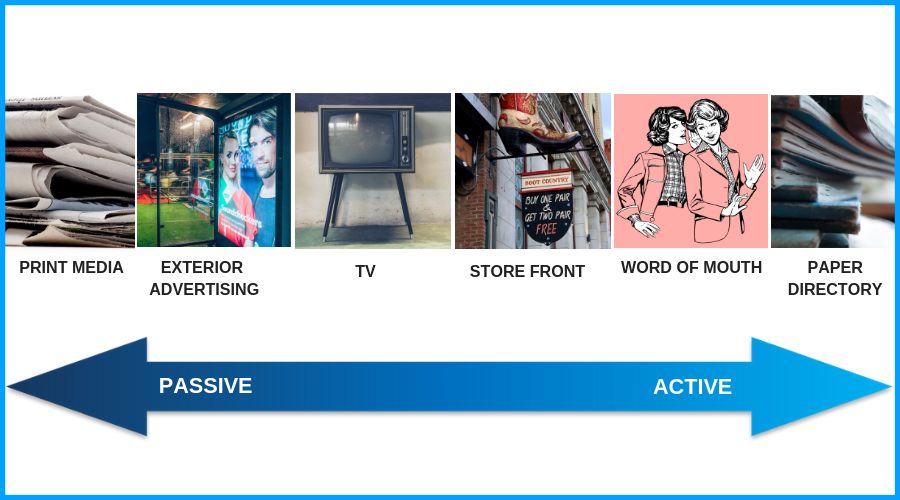
On the left-hand side are advertising methods that are closely associated with branding — the idea that potential customers have heard about you before and associate your flower shop with the products they are seeking.
Branding is great. Actually, it’s better than great…
When someone says “Subway,” chances are your brain automatically responds with “Eat Fresh.”
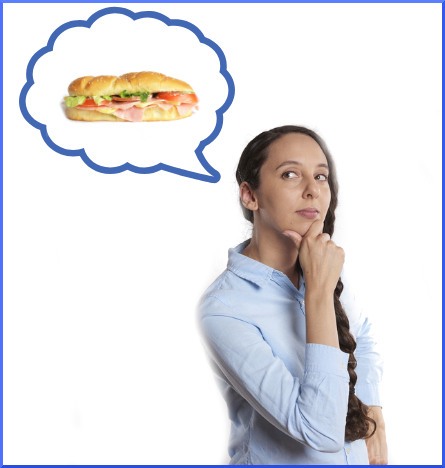
The brand is stuck in your head — so when you’re looking for a freshly-prepared sandwich, you automatically know where to go. I feel like a sandwich right now…
Branding is, however, a PASSIVE form of advertising.
Most people reading the bus bench or watching TV are not actually looking for floral arrangements at the time they see your advertisement.
What you’re hoping is that they remember you when they are actually want floral arrangements. Fingers crossed…
The truth is that effective branding takes a really long time and, not to mention, a truckload of money.
Subway spends half a billion dollars each and every year making sure that their brand comes to mind whenever you have a craving for a sandwich.
What ACTIVE Advertising Models Has Your Flower Shop Used?
At the other end of the spectrum is active advertising.
Here, your potential new customer is looking for you, (and not the other way around).
He or she is actively seeking out florists at the time he or she is ready to buy.
With active advertising, you are at the right place at the right time to make a connection with someone who’s ready to buy your flower arrangements.
Doesn’t that sound awesome?! It is, for sure. But here’s the tricky part…
You have to be found in the right place in order to make that connection.
If potential new customers are walking on a nearby street and don’t see your flower shop’s front door…
…or if two pages of the local phone book are stuck together, (maybe because of a soggy Subway sandwich)…
…then you’ve missed the opportunity to make a potentially profitable connection.
And you’ll never know it.
Do You Rely on Word-of-Mouth Recommendations to Grow Your Florist Business?
Let’s briefly discuss a special subcategory of active advertising — word-of-mouth recommendations.
(You likely already know how powerful it is.)
Basically, your previous customers tell potential new customers to go to your flower shop because they were impressed by your floral arrangements and the service they received.
The best part? This form of advertising is 100% FREE!
It’s also great because it means that all of the hard work you have put into your business has paid off…
Your flower shop is so incredible that people are talking about it.
But…(isn’t there always a “but”)…
It’s becoming increasingly more difficult for word to spread within your community about your great flower shop.
Why?
People move more often these days. It’s getting harder and harder to organically grow your business through personal recommendations.
And…
People simply communicate and search for information differently now. There’s no escaping the fact that we’re living in the digital age. Furthermore, consumer reliance on technology is only going to increase.
Chapter 2: Digital Flower Shop Advertising
Your instinct that you need to grow your online presence in order for your florist business to thrive long-term is a good one.
You’re probably already aware that the majority of consumers today do online research first before they’ll even consider whether or not to call you or visit your flower shop. (This is true for all businesses.)
What you may not be aware of is just how many consumers do online research first.
It’s 97% according to 2017 Local Consumer Review Survey!
In other words, 97 out of every 100 people use the Internet to find flower shops, to research them before coming to a decision on who to contact.
That’s practically everybody…
If you take away just one concept from this definitive guide, this is it:
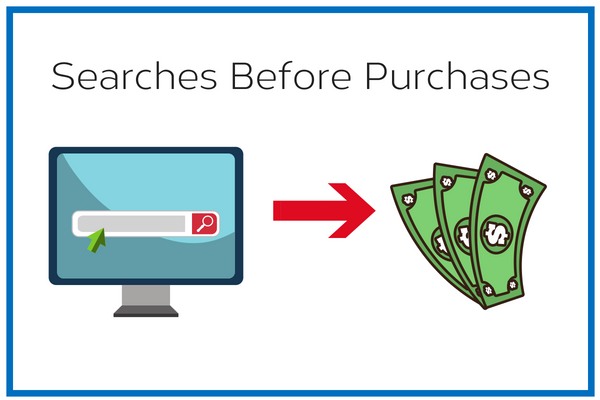
Long gone are the days where businesses — including florist businesses — could rely on obtaining a steady stream of new customers via traditional word-of-mouth referrals and direct community outreach efforts.
In this digital age, it’s vital for florist businesses to get a solid handle on digital marketing in order to ensure their long-term survival.
Not only do you want to let online consumers know about the floral arrangements you design, you need to compel consumers to contact you instead of contacting a competitor.
Sounds good, but the Internet is a crowded, busy and noisy marketplace. There’s an overwhelming amount of competition when it comes to vying for people’s attention.
How do you get your florist business noticed in the fray — particularly if you don’t have an unlimited marketing budget?
If you take the time to read this entire guidebook from start to finish, you’ll have the answers you need…
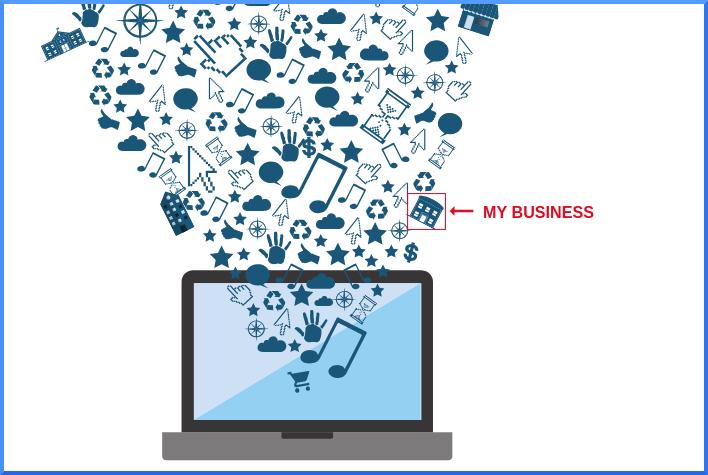
Now, the first thing to know is that digital marketing for florist businesses is not so different from traditional advertising in that digital advertising also comes in two different varieties — passive and active.
Remember, passive advertising is about length of time — exposing consumers to your brand over a long period of time in hopes of building brand recognition — while active advertising is about timing — connecting with consumers at the exact time they’re searching for flower arrangements.
Interestingly, passive and active advertising in a digital setting have the same pros and cons that they do with traditional advertising.
We’ll explore those pros and cons further…
Chapter 3: Introduction to Free Social Media Marketing for Florists
We’re going to start with organic social media marketing — by which we mean posting content on social media for free.
In this chapter, we’re going to focus on Facebook and Twitter since these platforms are the most popular with florists.
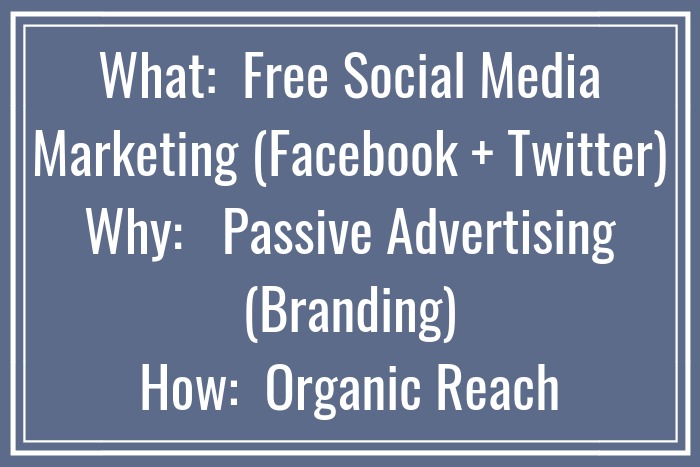
Why are we starting here?
It’s because of the findings from Love Lives On’s 2018 Industry Review of the online presence of 200 florist businesses in the United States, Canada, United Kingdom and Australia.
When it comes to an organic flower shop marketing strategy on social media, we found that Facebook is the most popular, followed by Twitter.
Specifically, Love Lives On found that:
- 60% of florist businesses regularly use Facebook; 10% use it sometimes; and 30% rarely or never use Facebook.
- 15% of florist businesses regularly use Twitter; 15% use it sometimes; and 70% rarely or never use Twitter.
- 7% of florist businesses utilize other social media platforms — Google+, YouTube and Pinterest — but not with regular frequency.
Flower shops that do not engage in any social media activities typically fall within the small to medium-size categories. The 3 mostly commonly-cited reasons for not engaging in social media are:
- Lack of knowledge
- Lack of resources (human and financial)
- Lack of time to plan a social media strategy
Florist businesses that utilize social media often are typically large independent businesses or corporations listed on the stock exchange. (We surmise that this is due to increased financial and human resources at their disposal.)
We also found that newly established florist businesses and younger owners are far more likely to engage in social media and digital marketing and other progressive practices.
When it comes to content marketing — an advanced form of digital marketing — Love Lives On found that:
- 4% of florist businesses have produced YouTube videos, blog posts and webinars on flower-related topics.
- However, 70% of the content that we reviewed could be improved in terms of search engine optimization (SEO).
We have a whole section dedicated to content marketing further on, so be sure to keep reading…
Given that many flower shops in Western countries — like United States, Canada, United Kingdom and Australia — currently use Facebook and, to a lesser extent Twitter, to organically grow brand awareness, let’s examine the pros and cons of this approach.
Chapter 4: Pros + Cons of Free Social Media Marketing
You’ll find many posts on the web written by social media experts that promise you that organic social media marketing will grow sales and ensure your florist business’s long-term financial health.
They’ll write that you’re absolutely crazy if you aren’t actively engaged on Facebook and other social media platforms. “You can’t afford not to be on Facebook,” they cry.
Social media experts have listed up to 23 business benefits that supposedly come from investing time in organic social media marketing — for example, in this post by Hootsuite.
When these long lists of supposed benefits are boiled down to their essence, there are really only two potential pros that are worth consider — it’s an easy way to develop and maintain relationships with customers and prospective customers, and it’s free!
(And even then, you’ll have to keep reading to see whether or not the pros outweigh the cons…)
Pro #1: It’s Free!
Who doesn’t love free, right?
Traditional flower shop ads often requires a sizeable budget. It’s not cheap to print flyers and brochures, advertise in local newspapers or magazines, or sponsor a community event.
Therefore, the prospect of reaching prospective customers with a modest investment of time, rather than money, is understandably alluring.
Pro #2: You Can Directly Engage with Customers
Unlike traditional flower shop ads where you deliver your brand message to prospective customers, social media allows prospective customers to talk back to you.
The theory is that having two-way conversations will put you in the forefront of the minds of prospective customers, given enough conversations and enough time.
There’s also the hope that a piece of content you post is so interesting, so inspiring, so conversation-provoking, that it goes VIRAL…
…which means that, suddenly, your post is not just being read by your hundreds of followers, but shared with thousands of people!
(“Going Viral” is the “Holy Grail” when it comes to social media marketing.)
Wow! The potential of reaching thousands of people, maybe even millions, for free?! Sounds amazing…
But before you run off and sign up for social media accounts, there are some significant realities that you need to be aware of…
There are 2 major cons when it comes to the organic reach of your posts on social media.
Remember, organic reach on social media is how many people see your posts without you spending any money.
Con #1: Organic Reach on Facebook and Twitter is Now Dead
When Facebook and Twitter first emerged, small businesses could use these novel platforms to reach people beyond their immediate community for free. Many small businesses were able to grow sales without spending a dime.
But sadly, those golden days are over.
Facebook and Twitter, (and indeed, all the major social media platforms), are now publicly-traded companies who have to report earnings to shareholders, which means that they are focused on generating profits more than ever before.
Organic reach for Facebook and Twitter has been on the decline for quite some time. But as of 2018, they have declined to almost zero.
For businesses, this means that in order to reach your audience on Facebook and Twitter, you will have to pay to do so.
In other words, it’s now a “pay-to-play” system.
In 2018, Facebook introduced two seismic algorithm changes that all but destroyed your already-dwindling organic reach. It’s now a dismal 2.71% according to business experts at Entrepreneur.
In 2016, Twitter had an organic reach of 3.61% according to a survey of the top 50 global brands.
But in 2018, that low percentage for Twitter’s organic reach has further declined.
(We haven’t been able to find an exact figure for the current percentage of organic reach, but we’re confident that it’s likely less than 3%.)
Not good….
(And that’s in addition to evidence that the number of Twitter users is also declining.)
What does that mean for an organic flower shop marketing strategy?
It means that if you had taken the time to build a sizeable audience on Facebook or Twitter before they changed the rules of the game, with the new algorithm changes, less than 3% of the people that follow your business will organically see the new content that you post in your feed.
If you want all your followers on Facebook and Twitter to see your content, you’ll have to pay.
If you want to gain more followers, you’ll also have to pay because it’s now very difficult to attract new followers organically.
And if that wasn’t discouraging enough…
Business experts at Entrepreneur say that: “Organic reach will continue to decrease.
“As these companies continue to report their earnings, the pressure to increase profits will force them to charge for services that have been free.
“Organic reach may never reach zero, but it will continue to get close.”
Remember that dream about going viral?
You can certainly forget about going viral organically in this new “pay-to-play” system.
It’s no longer enough to produce a compelling piece of content (like a video) that viewers love.
You’ll also need a big advertising budget, as well as the help of an advertising agency, for people to even see it. Realistically, this is beyond the means of many flower shops.
Con #2: It’s Extremely Difficult to Measure ROI.
When it comes to any marketing strategy —whether it’s traditional or digital — “Return on Investment” (ROI) defines whether the strategy is a success or a failure.
Facebook has long been telling businesses that getting “likes” is important for building brand awareness and loyalty.
But as a flower shop owner, what you want to know is how many “likes” translate into actual customers?
Is getting “likes” on your Facebook page worth the time and effort?
If you’re not sure about the answers to these questions, you’re not alone…
A study done by Domo found that 3 out of 4 marketing experts can’t measure ROI when it comes to social media.
Without a clear ROI, it’s hard to justify spending time (or money) on social media marketing.
Bottom Line
Start treating Facebook and Twitter like paid platforms.
If you already had a sizeable number of followers on Facebook or Twitter before the recent algorithm changes, it’s worth your time to keep engaging them by posting new content and responding to comments.
However, you should supplement your organic efforts on Facebook and Twitter with paid posts in order to reach more of your target audience.
Given that social media marketing is passive (i.e. it’s about branding) instead of active (i.e. generating warm leads), and is increasing in cost, it’s going to become more and more the domain of large florist businesses and corporations.
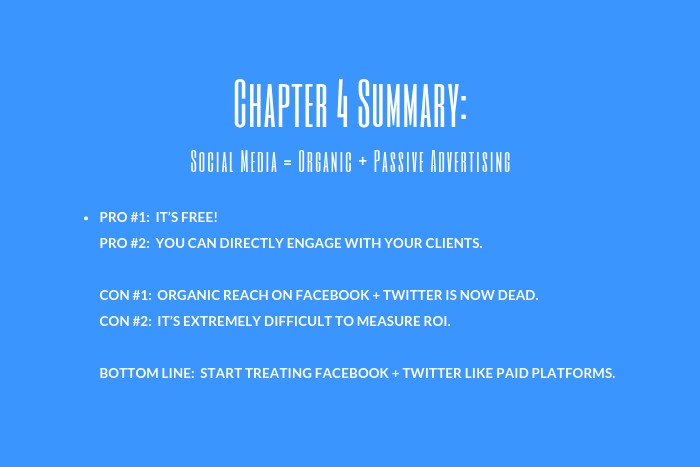
Additional Readings
Entrepreneur: How to Get Thousands of Views on Your LinkedIn Content.
HubSpot: The Decline of Organic Facebook Reach & How to Adjust to the Algorithm.
Forbes: When Social Media is a Waste of Time for Businesses.
Neil Patel: Is Facebook Organic Reach Really Dead?
Tables Summarizing Flower Shop Advertising
Review Summary Tables that compare and contrast different options when it comes to digital marketing for florists.
Chapter 5: Introduction to Impressions-Based Flower Shop Ads (CPM)
We saw in the previous chapter that it’s now impossible to grow an appreciable amount of brand awareness through organic posts on social media.
It’s time to consider the pros and cons of paying to build brand awareness via ad space on social media platforms like Facebook and Twitter, or on search engines platforms like Google.
In other words, is it worth paying for impressions-based digital advertising to build brand awareness?
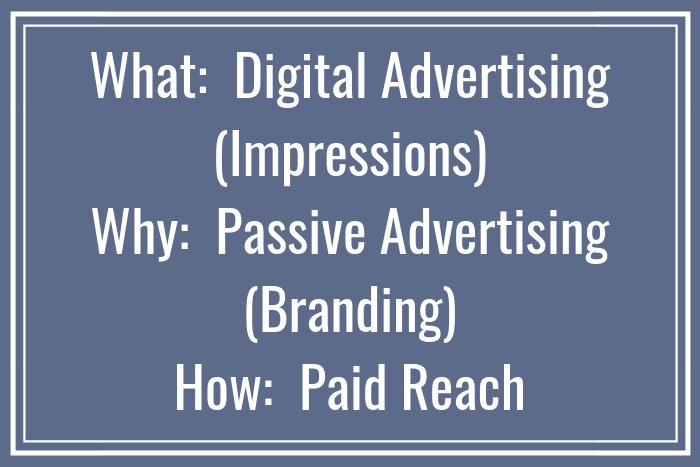
What Do We Mean by the Term “Impressions”?
The term “impressions” refers to the number of times your flower shop ads are displayed on the screens of online users, regardless of whether or not the advertising was clicked (or for that matter, even seen — more on that a bit later).
It’s important to understand that the purpose of impressions-based advertising is NOT action-based. (If it were, the goal would be to have online users click on the ad or call your flower shop.)
Instead, the purpose is to make an impression on a user that sees your ad. The hope is that he or she will remember your florist business when he or she is ready to purchase a flower arrangement.
It’s about spreading brand awareness. Therefore, it’s a form of “passive” marketing, albeit in a digital context.
How are Impressions-Based Advertising Sold?
Advertising based on impressions is billed at a flat rate per 1,000 impressions.
In other words, you pay X dollars for 1,000 people to see your ad on their screen. You’ll pay 10x dollars for 10,000 people to see your ad — and so on.
The precise number of “x” in “x dollars” is set by the platform you’re advertising on (e.g. Facebook, Google).
You are not charged additionally for any clicks that the ad receives. (In any event, the number of clicks will be extremely low.)
Since impressions are sold in lots of one thousand, this form of advertising is referred to by marketers as “CPM,” which stands for “Cost Per Thousand.”
(Many people mistakenly believe that the M in CPM stands for “million.” The M, in fact, is the Roman numeral for one thousand. The Roman numeral for one million is MM.)
CPMs are usually display ads, meaning that they are visual. However, they can also be text only ads.
Now that you have a basic understanding of how CPMs work, let’s take a look at the pros and cons of this form of passive advertising.
Chapter 6: Pros + Cons of CPM Flower Shop Ads
Platforms that sell CPMs, as well as marketing agencies that offer CPM campaign management services, all claim that this form of passive advertising offers many benefits.
Here are the two main benefits that they claim:
Pro #1: CPM Rates Are Usually Inexpensive
According to AdStage, in Q1 of 2018, advertisers spent, on average, $2.80 per thousand impressions on Google Display Networks and $2.41 per thousand impressions on Facebook.
Having 1,000 people know about your florist business for less than the cost of a cup of coffee sounds amazing, doesn’t it?
Advertising platforms like Google and Facebook will certainly tell you that CPMs offer you the best value for your marketing dollars.
But is it as good as it sounds?
Keep reading to find out…
Pro #2: You Have Budgetary Control
You have full control over how much you spend because you’re able to apply a budget to your CPM advertising campaign at the outset.
Since you’re paying only for a certain amount of views, you’re able to choose a budget limit that you’re comfortable with.
Con #1: There’s a 56% Chance Your Ad Isn’t Even Seen
Here’s the secret that many publishing platforms and marketing firms don’t want you to know…
One thousand impressions does NOT mean that one thousand people actually saw your ad!
In fact, Google admits that 56% of ads aren’t even seen! (But hey, they’re still willing to take your money….)
Some reasons why your CPM advertising may not be viewable by your target audience include:
- Ad-blocking software.
- Users scrolling down the page before the ad has loaded.
- Screen resolutions too small for the ad to display.
- Broken plug-ins preventing ad display.
- Mobile incompatibilities, such as desktop-only websites.
- Minimized browser windows.
- Users click on another application before the ad has loaded.
- Pages loaded in background tabs then never accessed.
- Malware cloaking ads that redirect users clicking on your legitimate ad to their ad for nefarious purposes.
In short, the behavior of users and technical problems will both significantly impact the audience reach that you are promised when you set your budget for a CPM advertising campaign.
Con #2: People are Sick of Ads and Mentally Tune Them Out
We love this quote about CPM advertising from Dana DiTomaso:
“This feels like the in-joke of the Internet, a wink-wink between traditional agencies and publishers — those that sell display ads to unsuspecting clients and the sites that accept ad revenue.
“Both of these parties know that display ad metrics aren’t just inaccurate, they’re a heaping pile of bullshit.
“Impressions have ended up being the ‘look how great we are!’ measure that agencies that are more focused on trying to obfuscate what’s really going on so that they look good, rather than report on real results.
“It’s a big number and it looks amazing to say that your ad had 1 million impressions instead of the sad trombone of 10 clicks.”
There may be some of you that are now thinking: “Well, okay. But even if only 56% of people are seeing my ad, it’s still worth it to build brand awareness because CPM rates are so cheap.”
We’d hate to be the one to tell you, but the truth is that the emperor has no clothes…
The reality is that users today have severe ad fatigue and pretty much mentally block them out, (if they haven’t already physically block them by installing an ad-blocker).
Users, on average, spend 3 seconds looking at your ad.
Do you really think that you’re able to imprint your flower shop’s name in the mind of a user in 3 seconds?
Well, what about video ads? Do they fare any better?
Well, actually no.
When it comes to video ads, Facebook, Twitter, Instagram, and Snapchat charge based on the number of video views. Makes sense…
However, what counts as a “video view” is a user watching your video for 3 seconds!
Now, it’s no accident that a video view is defined as 3 seconds because that’s how long the average user will spend viewing your video.
If platforms like Facebook defined a video view as 4 seconds or longer, they’d miss out on all that lovely money, which would be simply terrible for them…
What’s sad is that many people, including flower shop owners, believe that they’re only being charged when someone watches most, if not all, of their video.
And what’s even worse is that their advertising firms are reporting the number of video views to them with pride.
So remember, it’s not really about the number of video views, it’s about how long people watch your video for.
The reality is that it’s nearly impossible to build any appreciable brand awareness in 3 seconds.
Still not convinced that CPM advertising is a waste of time and money?
Solve Media has run the numbers and found that users are statistically more likely to do some pretty amazing feats than to ever click on your CPM florist business advertisement:
- Users are 31.25 times more likely to win a prize in the Mega Millions than they are to click on your ad.
- Users are 87.8 times more likely to apply to Harvard and get in than they are to click on your ad.
- Users are 112.50 times more likely to sign up for and complete Navy Seal training than they are to click on your ad.
- Users are 279.64 times more likely to climb Mount Everest than they are to click on your ad.
- Users are 475.28 times more likely to survive a plane crash than they are to click on your ad.
Bottom Line
In our humble opinion, unless you are a large corporation with significant financial and human resources, your flower shop advertising budget is better spent elsewhere.
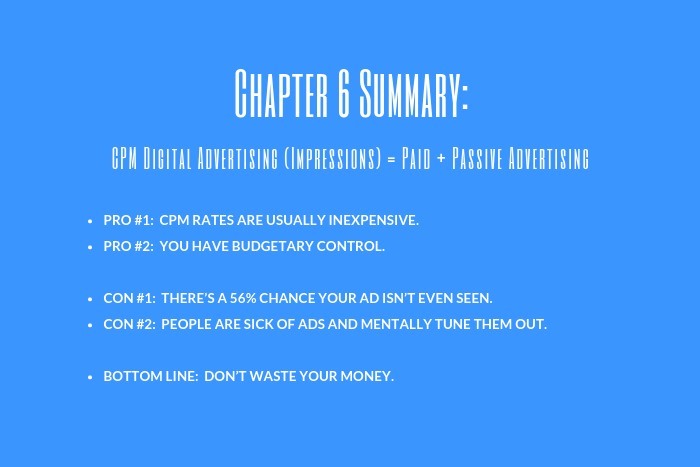
Additional Readings
Moz: The Alleged $7.5 Billion Fraud in Online Advertising.
PPC Hero: Is CPM Bidding a Waste of Your Money?
AdEspresso: What You Should Learn from the Man Who Lost $600,000 on Facebook Ads.
Tables Summarizing Flower Shop Advertising
Review Summary Tables that compare and contrast different options when it comes to digital marketing for florists.
Chapter 7: Introduction to Pay-Per-Click Flower Shop Ads (PPC)
Pay-Per-Click (PPC), also known as Cost-Per-Click (CPC), is another digital marketing model that might be the answer for how to get customers for a flower shop.
The purpose of PPC is to direct traffic to your florist business website and generate warm leads (i.e. it’s not a “branding” exercise).
Unlike CPMs where you pay for displaying your ad, with PPCs you pay the publishing platform displaying your ad only when your ad is clicked.
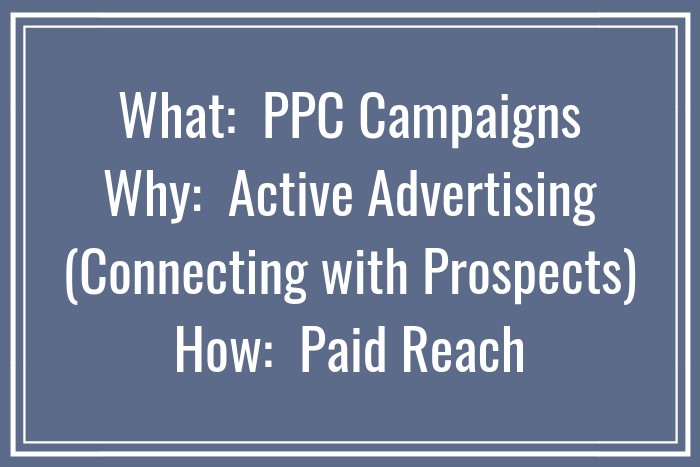
Where do PPC Advertisements Appear?
Pay-Per-Click advertising is shown on:
- search engine results pages (i.e. the pages that appear when you enter a keyword), either at the top or bottom of the page
- websites (or network of websites), anywhere that the publisher designates as ad space; and
- social media, typically in the right-hand side bar.
In other words, PPC ads appear everywhere on the Internet!
With search engines like Google and Bing, advertisers bid on keyword phrases relevant to their target market.
Here are some examples of PPC advertising in Google’s search results that appear when you enter the search term “flower shop Toronto”:
Pay-per-click advertising can also appear on a website (or network of sites) that host related content. These are typically referred to as “banner ads.”
Unlike search engine and social media PPC ads, content sites commonly charge a fixed price per click rather than use a bidding system.
Websites that utilize PPC ads will display an advertisement when a keyword query matches an advertiser’s keyword list that has been added in different ad groups, or when a content site displays relevant content.
Such advertisements are called “sponsored links” or “sponsored ads” or “advertisement.” Here’s an example of a PPC ad on a content site:
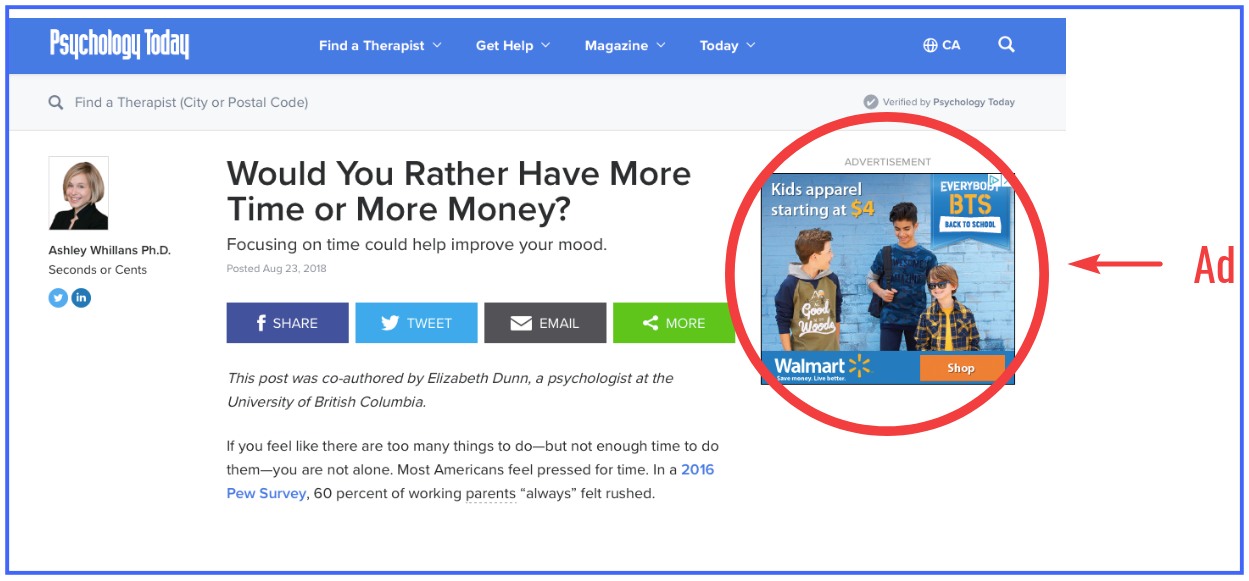
Another example:
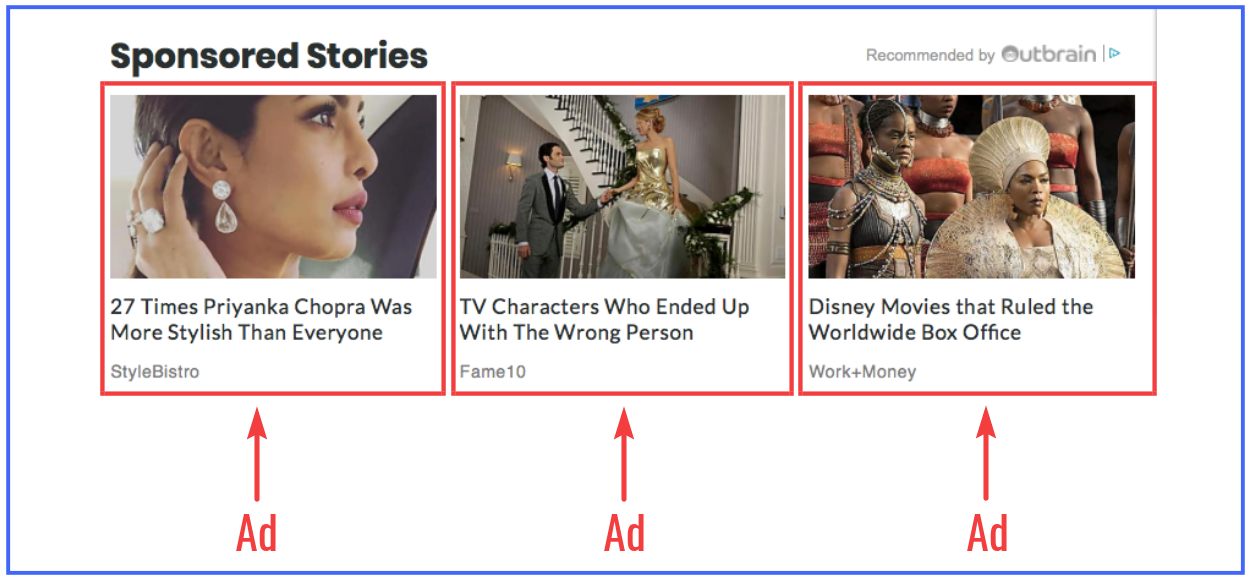
Social media platforms like Facebook and Twitter have also adopted PPC as one of their advertising models, and are also based on a bidding system.
Here’s an example of sponsored content on Facebook. (No doubt you’ve seen many of these types of ads yourself if you’ve spent any time on the platform.)
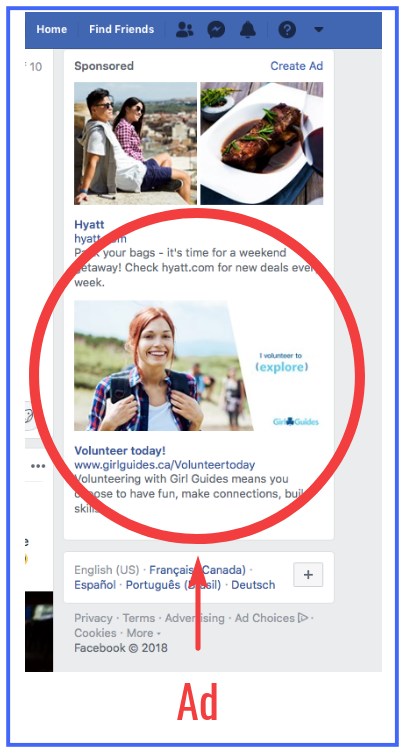
How Many Keywords Should My Florist Business Target?
Keywords are the foundation of Pay-Per-Click advertising.
For example, your PPC flower shop ads will be shown to users who type “find flower shop near me” into Google if you’ve nominated this keyword phrase.
This brings us to a commonly-asked question: “How many keywords should I be targeting in my PPC advertising campaign?”
The typical answer is somewhere in the 20-25 keyword range, and definitely no more than 30 keywords per campaign or ad group.
According to experts at WordStream, “this is a loose guideline, and isn’t anything that is set in stone. The important thing at the end of the day is that the keywords in each ad group are closely related to one another, so that you can create super-specific ad copy.”
If you have a set of say 20 keywords, over time you can identify which keywords are the top performers. (Obviously you’ll keep using those ones.) You’ll also remove low-performing keywords altogether, and test out new keywords in their place.
Targeting too many keywords in an ad group is the number one mistake that many people make.
Why is it a big mistake to include more than 30 keywords?
It’s a mistake for 3 main reasons: (1) you’re spreading your advertising dollars too thinly; (2) you’ll quickly exhaust your daily budget before you get anywhere; (3) it’s more difficult to track keyword performance and identify winners and losers.
What Types of Keywords Should I Use?
Since search engine PPC ads and Facebook PPC ads are based on a bidding system, the answer depends on the size of your budget.
The cost of a keyword is related to how often it is used by consumers in your geographical area.
When it comes to popular keywords, you’ll have to put in a top bid to ensure that your ad gets shown a reasonable amount of times and in one of the top 3 spots.
If you have a modest digital advertising budget for your flower shop, you may only be able to successfully bid on a couple of top keywords.
The rest of your keywords will then be moderately competitive keywords.
You should also include branded keywords so that if consumers specifically search for your florist business by name your ad appears at the top of the page.
The key is to track keyword performance over time and readjust your strategy based on what you’re seeing in the data.
You should also consider selecting negative keywords, which means keywords that you want to specifically exclude.
For example, you might not want to pay for your Google Ad to appear when a user searches for the keyword “cheap flowers” if he or she isn’t the type of customer you’re after. If you don’t want your ad to appear, you can ensure that it doesn’t by selecting “cheap flowers” as a negative keyword.
Since selecting keywords is not a skill that the average flower shop owner is well-versed in, you may have to hire an expert to help you. (More on that later…)
How Do You Rank #1 in Google Ads?
Your actual ad position is determined by your advertising rank, which is a combination of your maximum bid multiplied by your quality score.
What is a “quality score”?
Quality Score is Google’s rating of the quality and relevance of both your keywords and PPC ads.
According to WordStream, your Quality Score has “enormous influence over the cost and effectiveness of your paid search campaigns.
“Just as your credit score can affect whether or not you qualify for a loan and how high your interest rate is, Google Quality Score affects how your PPC ads perform and how much you pay for each click.
“Your Quality Score depends on multiple factors, including:
- Your click-through rate (CTR).
- The relevance of each keyword to its ad group.
- Landing page quality and relevance. (Landing page is where users end up when they click on your ad.)
- The relevance of your ad text.
- Your historical AdWords account performance.
“No one outside of Google knows exactly how much each factor ‘weighs’ in the Quality Score algorithm, but we do know that click-through rate is the most important component.”
Google assumes that the more people that click on an advertisement, the more consumers must like it, meaning that it’s relevant and helpful. Accordingly, Google rewards popular advertisements with:
- Higher ad rankings
- Lower costs
How Much Does a Click Cost?
Since you only pay when someone clicks on your ad with PPC campaigns, it’s only natural to wonder how much a click will cost you.
You can probably already guess the answer, based on the information above. It will depend on:
- The competitiveness (i.e. popularity) of the keyword that you are targeting.
- Your Quality Score
Given these variables, it’s impossible to state the exact amount you will pay for a click.
What we can say is that research shows that the average cost per click (CPC) for e-commerce Google Ads is $1.16 on the search network and $0.45 on the display network.
Now, that doesn’t mean that it costs you $1.16 on average to gain a new customer via search. If only it were that simple and cheap!
Not everyone that clicks on your advertisement is going to purchase from you.
Which brings us to the next question…
How Much Does It Cost at the End of the Day to Gain a New Customer?
Remember those dismal statistics about how unlikely you are to get clicks? (See Con #2 in Chapter 6 above.)
You’re basically more likely to get into Harvard or successfully complete navy seal training than you are to get an online user to click on your ad.
When it comes to the average click-through rate (CTR) for e-commerce Google Ads, research shows that it is 1.66% on search network and 0.45% on display network
So, in other words, for every 100 people that see your flower shop advertising, on average less than 2% of them will click on it because they are interested in learning more about your flower arrangements (i.e. they haven’t decided to purchase from you yet).
Once the user has clicked on your ad, they are taken to a specific page on your website, most likely the page with pictures and descriptions of your flower arrangements, along with pricing information.
In digital marketing parlance, this page is referred to as a “landing page” because it’s where users “land” after they click on your ad.
Of the users that click on your ad and arrive at your landing page, on average, 2.35% will actually sign up as your customer (i.e. the “conversion rate” or CR).
Now, let’s walk through a concrete example of how much it costs at the end of the day to gain a new customer…
Let’s assume that your flower shop ads are targeting potential new customers on the Google search network. The average cost per click is $1.16. The average click through rate is 1.66%.
Let’s take a look at the math:
10,000 users see your ad.
166 users click on your ad — (i.e. 1.66% of 10,000).
3.9 users purchase from you — (i.e. 2.35% of 166).
Now, you paid Google $192.56 for the ad clicks — (i.e. $1.16 x 166).
At the end of the day, it cost you $49.37 for each new customer — (i.e. $192.56 ÷ 3.9)
Now, whether or not $49.37 is a good price to pay to acquire a new customer will depend on how much a customer typically spends on a flower arrangement, and how long they typically remain your customer (i.e. lifetime value).
Of course, this bottom line figure will change if you:
- pay more (or less) for the click (i.e. more or less competitive keyword); or
- have a higher (or lower) click-through rate (i.e. how compelling is the pitch you make in your ad copy?); or
- have a higher (or lower) conversion rate (i.e. how compelling is the pitch you make on your landing page?)
Now that you know the basics of PPC advertising, it’s time to dive into the pros and cons of this method of flower shop advertising.
Chapter 8: Pros + Cons of PPC Flower Shop Ads
Pro #1: You Only Pay for Clicks
Unlike impressions, you only pay if someone clicked on your ad.
Pro #2: You Can Reach People Who Are Ready to Buy
With PPC advertising, you’ll pick keywords associated with flower arrangements.
What this means is that online users who see your flower shop ads are actively searching for flower arrangements.
These online users are highly-qualified leads because they are ready to make a purchasing decision — making PPC advertising far more effective at gaining you more customers than impressions-based advertising.
Pro #3: Google is Devoting More Space to Ads
In 2017, digital marketing experts began to notice that clicks in Google’s organic results were down 25% in favour of ads on personal computers, and down 55% on mobile.
Those are some really significant drops in organic clicks.
Why is this happening?
It’s because Google wants to maximize profits gained through advertising. There are now:
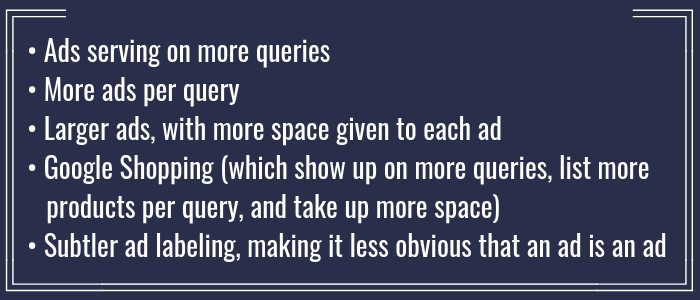
Now, PPC ads aren’t all peaches and cream. There are some cons that you also need to consider…
Con #1: You Can Lose Your Shirt
The harsh reality is that you can lose a lot of money on PPC ads if you don’t know what you are doing.
All the tutorials on the web are only able to show you the mechanics of setting up an ad account and the mechanics of how to monitor performance.
It’s impossible to find advice that’s crafted for your specific business goals.
And even if you’re experienced when it comes to PPC ad mechanics, you’ll likely overspend significantly until you figure out:
- how much to bid for the keyword; (if you under-bid, your ad won’t be shown much, but if you over-bid, you’ll be paying much more than you need to for the same audience reach);
- which keywords are consistently the top performers;
- your ad copy (i.e. what to say to compel people to click on your ad);
- your landing page copy (i.e. what to say to get people to sign up as a customer).
The bottom line is that PPC ads are complicated, particularly Google Ads (formerly called AdWords).
AdEspresso states that: “Google AdWords is one of the most challenging platforms when it comes to monitoring your success.
“You can quickly spend hundreds, if not thousands, of dollars and see little to no return on investment.
“The metrics are tricky to establish, and you could find yourself with $0 fast.”
Case in point — Noah Kagan.
Kagan helped Facebook build their ad system, so he certainly knows a thing or two about advertising platforms and how they work.
After he, along with others, was made redundant, he started his own successful digital marketing business.
Kagan discovered that: “Not every advertising channel will work for everyone.
“I’ve spent $100,000+ on Google advertising and only made back $25,000. Damn. Not every advertising channel will work for every business.”
The reality is that most florist businesses simply cannot afford to lose $75,000.
Con #2: You’ll Likely Need to Hire Expert Help, Which Doesn’t Come Cheap
We’ve just covered how tricky PPC advertising is, and how easy it is to lose money (and lots of it!)
It’s also not the core expertise of most flower shop owners. Therefore, it would probably be wise to hire someone who is an expert in running a successful PPC advertising campaign.
Of course, the immediate problem is finding someone who has the knowledge and experience.
The second problem is how to evaluate whether they really know what they are doing before letting them run a campaign for you. (There’s the potential that they could lose a lot of money for you!)
Assuming that you are able to find a true expert, instead of a digital marketing “wanna-be,” how much will you pay for this expertise?
In our experience, an established digital marketer will charge you either 10% of your ad spend or $3,500 — whichever amount is higher — per month.
Remember that math example we did previously where we figured out that given the average CPC, CTR and CR for e-commerce ads, it would cost $49.37 to gain a new customer?
Say your goal was to acquire 100 new customers in 1 month. Your monthly ad spend for 1 month would be $4937.
On top of that, you would pay a digital marketing expert around $3,500 to run the campaign for you. ($3,500 is more than 10% of your ad spend — i.e. $493.70).
This extra cost brings your total monthly bill to $8,437.
The other thing to note is that digital marketers will never guarantee you results when it comes to CPC campaigns.
For a CPM campaign, they may guarantee a specific number of impressions based on your ad spend, but they’ll never guarantee the number of clicks you’ll get with any type of advertising.
Con #3: You Might Be Unknowingly Harming Your Brand’s Reputation
In 2017, The Guardian newspaper reported that major brands — including Verizon and Walmart — had pulled their ads from YouTube because the ads were being shown next to videos promoting extremist and terrorist views or hate speech.
The advertising boycott by brands concerned about their loss of business reputation has cost Google millions. (Google now owns YouTube.)
As The Guardian points out: “The row highlights an uncomfortable fact about advertising in a digital age: most brands don’t know exactly where their online advertising is running.
“The difference in the online world is that it’s all done by an algorithm. The human element is taken out of the equation, so there are problems.
Hate speech and extremist views are not the only videos that you don’t want your ad appearing next to. Your ad might be appearing in a context where the viewer is primed to have a negative view of your product or service, making your business look insensitive for displaying an ad.
Here’s an example we came across recently of a misplaced ad.
The YouTube video is a news story of a woman who is emotionally devastated when she learns that she isn’t the biological child of her father after receiving an ancestry DNA test kit from her siblings as a present. Her siblings, (she later learns that they are only her half-siblings), gave her the present because she was interested in researching the family tree.
Since both her parents were deceased at the time of the discovery, there was no chance of getting some answers as to how her conception occurred. The woman in the story goes on to start a support group on Facebook for other people whose lives have been turned upside down after doing an ancestry DNA test kit.
Now, note that the ad that automatically appears next to the video of this heartbreaking story and cautionary tale is for an ancestry DNA test kit! It highlights the problem that can occur when ad placement is determined by an algorithm, rather than a human being.
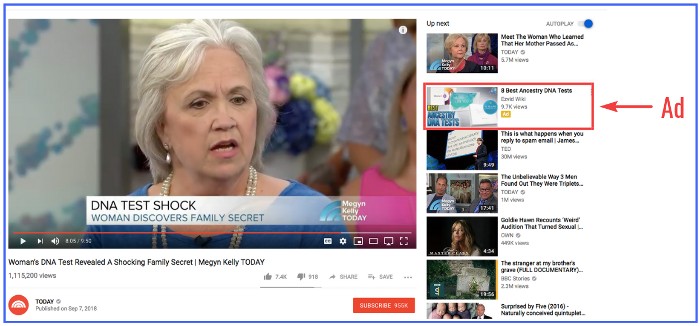
According to The Guardian: “Programmatic advertising has been largely fraudulent since its inception, and there are many companies in the marketplace including Google to have made vast profits out of the naivety of the advertisers, who haven’t really known what they’ve been buying.
“The dispute adds weight to demands for companies such as Google to take more responsibility for what is on their websites, as Facebook was forced to do in the wake of the ‘fake news’ scandal.”
Time will tell if platforms like Google and Facebook make protecting your business reputation a priority by fixing their flawed algorithm.
Con #4: Nearly Half of Your Ad Spend Will Be a COMPLETE Waste of Money, (Thanks to Accidental Clicks and Click Fraud)
Did you know that 50% of clicks on static mobile banner ads are accidental?
Wow!
And did you also know that studies have found that mobile users account for 52.2% of the market in 2018? (That percentage increases every year.)
Combine those two crucial statistics, and the result is that you’re essentially flushing 25% of your digital marketing budget down the drain because of accidental clicks.
If you’re spending $1,000 per month on PPC ads, you’re in fact wasting $250 per month because of fat thumbs.
Over the course of a year, that adds up to a whopping $30,000!
Ouch!
If you didn’t think the news could get worse, have you heard of “click fraud”?
Fraud occurs when a person — maybe a competitor — clicks on your ad so that you waste your ad spend.
They can also create automated scripts or computer programs — i.e. fraud bots — that will imitate a legitimate online user in order to click on your ad.
The goal again is to ensure that your ad dollars aren’t being spent on reaching real people.
Sure, it would be easy for platforms like Google and Facebook to have safeguards in place. Click fraud is easy to detect and an abuser can be blocked from seeing ads in the future via their computer’s IP address.
However, since advertising networks financially benefit from click fraud, they have no true interest in stopping it. (They’re being sued by an increasing number of advertisers.)
How widespread is the problem of click fraud?
According to a new report by White Ops, 1 in 5 clicks is done by a fraud bot.
So, back to math.
If you’re spending $1,000 per month on PPC advertising to get more customers for your flower shop…
…a fraud bot is wasting $200 per month of your hard-earned money. UP TO HERE
(And that’s in addition to the $250 per month that your wasting because of accidental clicks by real people.)
So nearly half of your total ad spend is a complete and utter waste of money, thanks to click fraud and accidental clicks!
Over the course of 1 year, with a monthly ad spend of $1,000, you’ll be wasting $5,400.
Bottom Line
Balancing the pros and the cons, it’s worth running PPC campaigns if you are a medium-sized florist business or larger, especially if you have access to a PPC expert that can guide your efforts.
PPC campaigns are likely too technically difficult for the average small flower shop to do themselves. The cost of hiring an expert in addition to the ad spend probably puts PPC advertising out of reach.
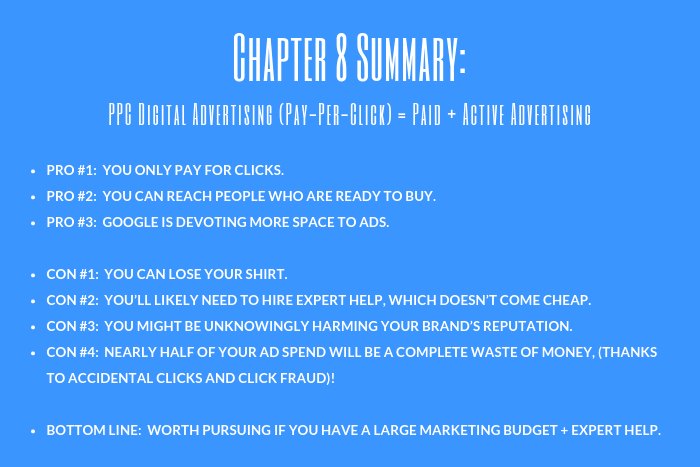
Additional Readings
AdStage: PPC Benchmark Report – Q1 2018
AdEspresso: The Complete Resource to Understanding Facebook Ad Costs – 2017 Benchmarks!
WordStream: 9 Ways to Lower Your Facebook Ad Costs.
WordStream: The Comprehensive Guide to Online Advertising Costs.
WebRunner: Case Study: How a Roofing Contractor Generates 300+ Roofing Leads Per Month with Google and Facebook.
Tables Summarizing Flower Shop Advertising
Review Summary Tables that compare and contrast different options when it comes to digital marketing for florists.
Chapter 9: Introduction to Flower Shop Websites
If you have a flower shop website, do you wonder if it has maximized its marketing potential?
If you don’t have a website, are you contemplating getting one? Are you hesitant because you’re unsure if it’s a worthwhile investment or not?
Whichever boat you’re in, this chapter (along with the next one) will identify some important factors that you should consider…
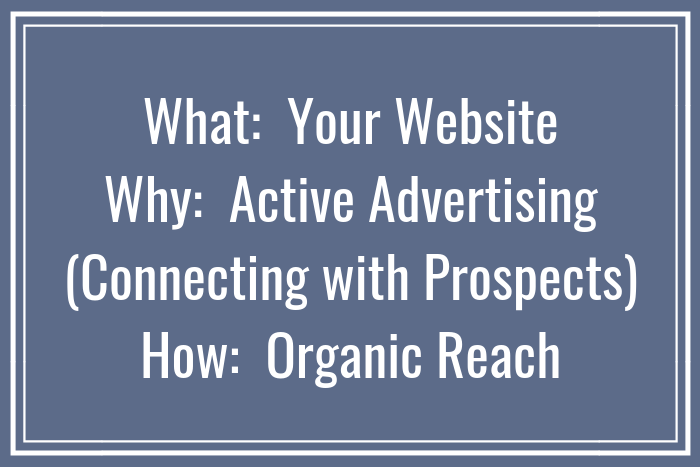
Overview of Small Business Websites in the United States
The 2017 Small Business Web Design Survey by Clutch found that 29% of small businesses in the USA do not have a website.
However, 92% of small businesses without a website said that they will have a website by the end of 2018.
While this remains to be seen, it does demonstrate that most small business owners in the United States believe having a website it important for business.
If that is the prevailing belief, then why do nearly one-third of small businesses not have a website?
According to Clutch, these are the top reasons given by small business owners in the USA:
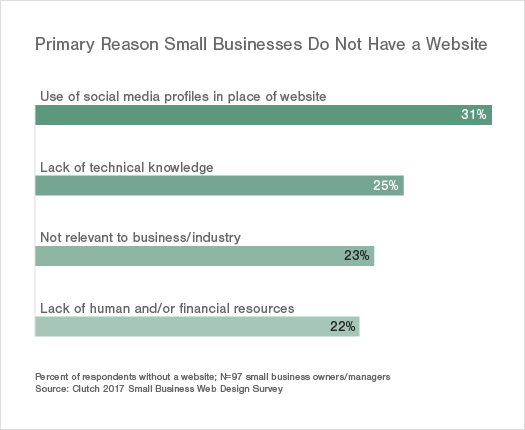
Strikingly, not every geographic region in the United States has the same percentage of website ownership among small business owners.
Only 58% of small businesses in the Midwest have a website compared to the Northeast (72%), the South (73%), and the West (77%).
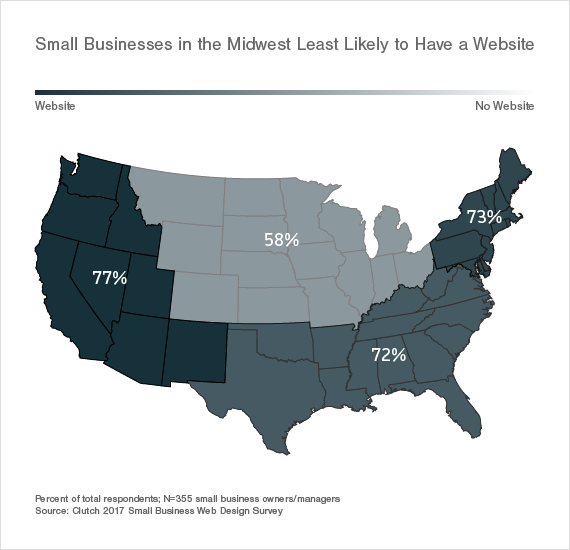
Clutch surmises that this disparity is likely because businesses in the Midwest have been slower to embrace technology as an effective marketing strategy (over traditional methods), in contrast to places like LA and New York.
“Midwest companies do not realize how much revenue they are losing each day they are not on the web.”
There is also a significant drop in website ownership when the revenue earned by a small business is less than $1 million annually.
Unsurprisingly, low-income small businesses are more hesitant to devote the time and resources necessary to pursue building a website.
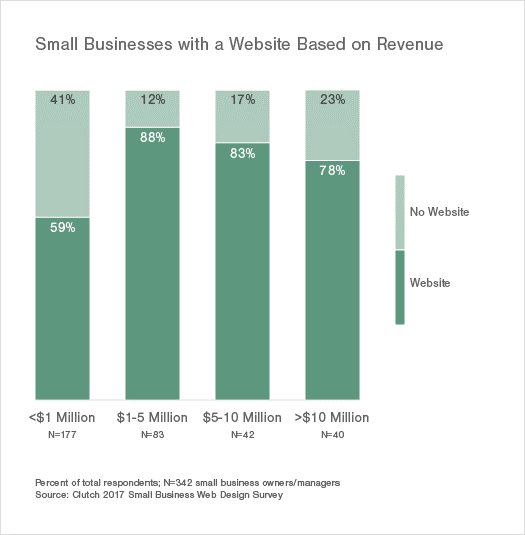
“Small business owners are focused on cash in the door — most often neglecting a true marketing strategy. They don’t realize that digital is part of the game.”
Overview of Small Business Websites in Canada
A recent study conducted by Redshift Research and commissioned by GoDaddy surveyed around 4,000 small businesses (defined as 5 employees or less) globally to assess how they are (or aren’t) using the Internet to promote their business products and services.
The study surveyed approximately 500 small business owners in each of the following countries: Canada, United Kingdom, United States, Brazil, India, Turkey, and Australia.
With respect to Canadian small business owners, the Redshift Research Study found that 59% of Canadian respondents did not have a website, and only 33% of them planned on building one within the next 2 years.
While many of these small businesses do have some form of Internet presence through social media platforms, they reported feeling that their operation was simply too small to warrant a website (35% of respondents).
Others cited a lack of technical expertise (21%) or the costs of starting a website (20%).
Overview of Small Business Websites in the United Kingdom
The findings of the Redshift Research Study (discussed above), which apply to the United Kingdom, are supported by another study — this time by Approved Index.
The study found that close to 2 million small businesses in the UK do not have websites.
This study did not explore the reasons for not having a website. Instead it focused on the resulting loss of revenue.
Overview of Small Business Websites in Australia
The 2018 Telstra Small Business Intelligence Report surveyed more than 1,000 small businesses and more than 1,000 consumers in Australia.
The Telstra Report found that only around 50% of Australian small businesses have a website. (Many small businesses had no online presence whatsoever.)
It’s also worth noting that 62% of the consumers surveyed indicated that would NOT consider using a specific small business if they couldn’t find information about that business online.
Something to keep in mind in you have a flower shop in Australia, but don’t invest in your online presence.
Chapter 10: Pros + Cons of Flower Shop Websites
Pro #1: You Can Make Your Own Website for Free
There are many website builders available on the Internet today that allow you to build a beautiful website for free, even when you have zero technical know-how.
All it requires is time and effort.
The best free website builder currently out there is Wix.
(Just for your information, Love Lives On doesn’t have any affiliation with Wix. We’re showing you Wix because it’s a solution that we think is easy to use and covers all of the elements that a modern website should have.)
Here are 7 benefits of using Wix:
- Free
- DYI
- Easy to Use
- Mobile-Friendly
- Huge Image Collection
- Designer-Made Templates
- 24-Hour Support
Wix has 100’s of gorgeous templates that you can use to build your new website yourself.
You simply drag and drop images that you find in their photo gallery into the template, and then type in the text you want to appear.
No technical know-how needed!
But if you’re still not feeling confident, Wix has helpful tutorials on how to use their platform.
If you’re wondering whether something that’s free could look good, check out examples of real-life home pages that have been built using Wix.
You’ll be awestruck how beautiful their free templates are.
The other great thing is that if you already have a domain name, Wix is able to hook up your new website to that domain name.
In other words, there’s no need to get a new domain name.
Wix also offers website hosting, or you can stay with your existing hosting company. The choice is totally yours.
Pro #2: Having a Website Gives Consumers Another Way to Find You Online
When it comes to your online presence, it doesn’t make sense to put all of your eggs in one basket.
Give consumers multiple ways to discover your flower shop online.
It’s the best strategy because consumers conduct searches in different ways. (There are literally over a thousand keywords related to flower arrangements!)
Your top digital marketing goal should be to maximize the number of places your flower shop is found online.
If you already have a business Facebook page, consider building a website as well.
But don’t just stop there.
Join places that your potential new customers are already hanging out as your business will be seen by people who are much more likely to buy from you.
Remember, you want to give consumers as many opportunities as possible to find your flower shop in a crowded, noisy marketplace, (which the Internet is).
Con #1: If Your Website Doesn’t Immediately Impress Consumers, They’ll Assume Your Florist Business Isn’t Reputable and Won’t Contact You
The Internet is no longer in its infancy.
As the Internet and technology have grown, so too has consumer expectations when it comes to your florist website.
Consumers today expect to have a certain type of experience when they visit your website, and will quickly leave if they don’t get what they want.
When we say quickly, we literally mean within 3 seconds!
Which now begs the question: “what type of experience do consumers expect to have?”
There are 3 parts to the answer…
First, online visitors expect to have a quality visual experience, meaning:
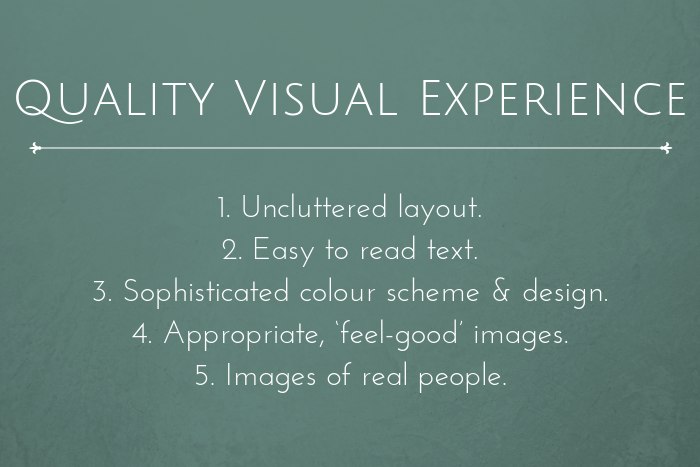
Second, consumers also expect to have a quality navigation experience, which covers:
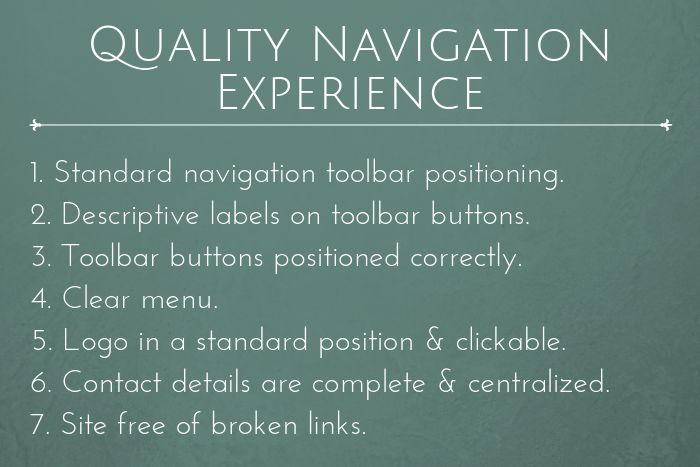
Third, visitors to your website expect to have a quality performance experience, meaning:
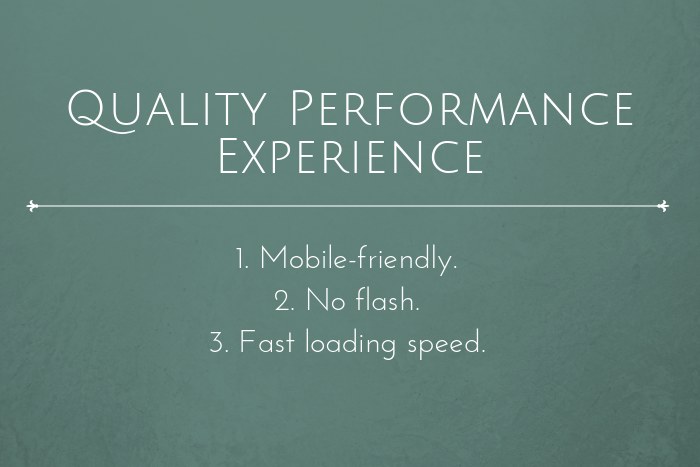
We could literally write an entire book on how to optimize your florist business website in order to meet current consumers expectations.
(And, in fact, we have! We’ve written the Ultimate Guide Book on Optimizing Florist Websites, and give away free copies to our business partners as an added bonus for joining our business directory.)
Our claim that your website needs to meet current consumer expectations for it to do your business any good is backed up by science.
In a ground-breaking study led by Dr. Elizabeth Sillence, it was discovered that:
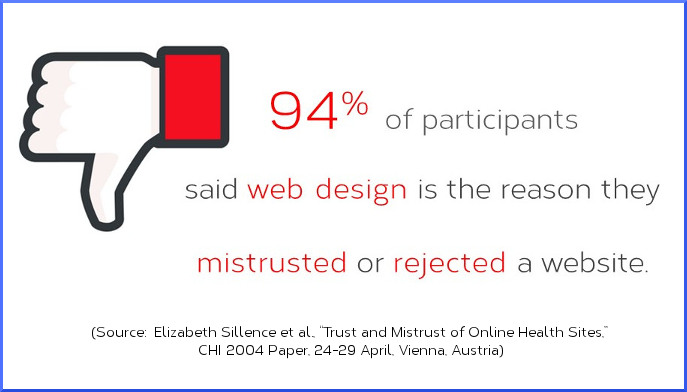
The research team found that when a website is out-of-date — either in terms of aesthetic elements or in terms of functionality — the site usually isn’t explored further than the homepage and is usually never re-visited again.
It takes 3 seconds or less to lose a potential customer!
The bottom line is that while you are able to build a website for free using a website builder like Wix, you need to be fully informed about modern design principles, otherwise you are wasting your time.
Con #2: You’ll Likely Need to Hire an SEO Expert to Get Traffic to Your Website
According to a study by Chitika, the top listing in Google’s organic search results receives 33% of the traffic, compared to 18% for the second position, and the traffic only degrades from there.
For the top 10 results, Chitika found:
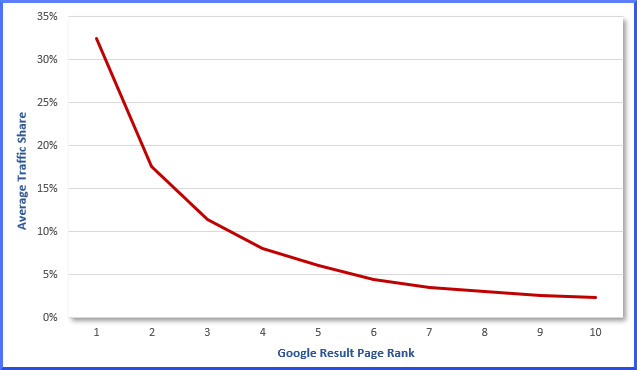
The top 10 results typically appear on page 1.
If your florist website appears on page 2, 3, 4, etc., of search results, the numbers dwindle even more with each successive page — meaning that you are not in a position to connect with new customers.
If you want one of the coveted top 3 spots for competitive keywords — like “flower arrangements” — you will most likely need to hire an SEO expert.
Optimizing your website and improving your website rankings is going to take time and money.
Many SEO firms will tell you that it takes 4 to 6 months. That’s generally accurate, but bear in mind this is when you start seeing results.
SEO results grow over time. Whatever results you’re getting at 6 months should be considerably less than what you’re getting at 12 months.
Most businesses pay between $2,500 and $5,000 for a monthly retainer.
So for a 6-month contract, you would pay between $15 K and $30 K.
And again, it could take up to 12 months to get your florist website into one of the top three positions on search engine results, which would double how much you’d have to pay.
Con #3: You Have to Maintain Your Website and Keep it Up-to-Date (More Work!)
According to SEO authority, Moz, each year Google changes its search algorithm around 500–600 times.
While most of these changes are minor, Google occasionally rolls out a “major” algorithmic update — such as Google Panda and Google Penguin — that affects search results in significant ways.
Therefore, it’s a big mistake to not keep your florist website up-to-date.
Another common mistake made by website owners is not keeping their site free of broken links.
A broken link is created when a page or post on a website is deleted, or when the URL is changed after it has already been indexed by search engines, linked to in social media, or bookmarked by users.
Broken links cause frustration and irritation and hurt your business reputation.
Potential new customers visiting your website will forgive only one or two broken links before they abandon your site all together.
Too many broken links on your site or from your site can also damage your reputation with the search engines like Google, making your site less desirable.
Therefore, broken links can hurt your search engine rankings and decrease the chances your florist website will show up in the search results.
Regular website maintenance therefore must include identifying and fixing broken links on your website.
Bottom Line
If you are a medium-sized florist business, or larger, you most likely already have a website, but you may need to hire an SEO expert to help it rank for competitive keywords.
On the other hand, if you are a small (or new) flower shop, you may not have a website yet, but probably want to get one…
Go ahead and make a simple website using a free website builder. You can literally make a beautiful website yourself in a day.
At a later point, when time and budget allow, you can explore adding SEO.
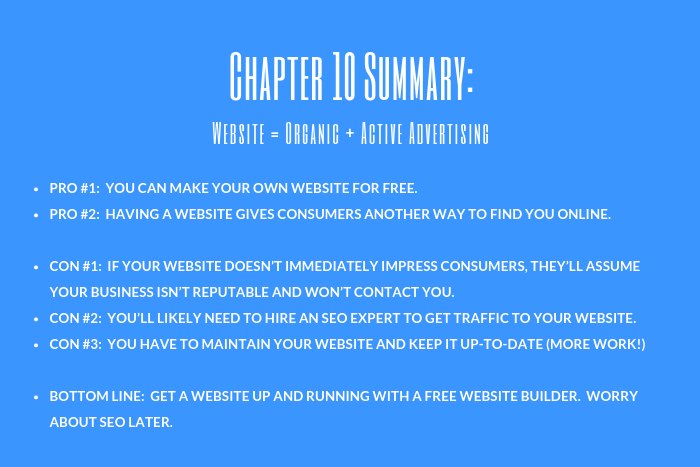
Additional Readings
Wix: How to Create a Website.
WebsiteSetUp: How to Make a Website.
Tables Summarizing Flower Shop Advertising
Review Summary Tables that compare and contrast different options when it comes to digital marketing for florists.
Chapter 11: Introduction to Content Marketing for Florists
The term “content” refers to any complete piece of media that you find on the Internet.
Love Lives On’s 2018 Industry Review of the online presence of 200 florist businesses in the United States, Canada, United Kingdom and Australia found that only 4% of florist businesses have produced content on flower-related topics (e.g. YouTube videos, blog posts and webinars).
According to Clutch, 23% of small business owners want to publish more high-quality content on their websites.
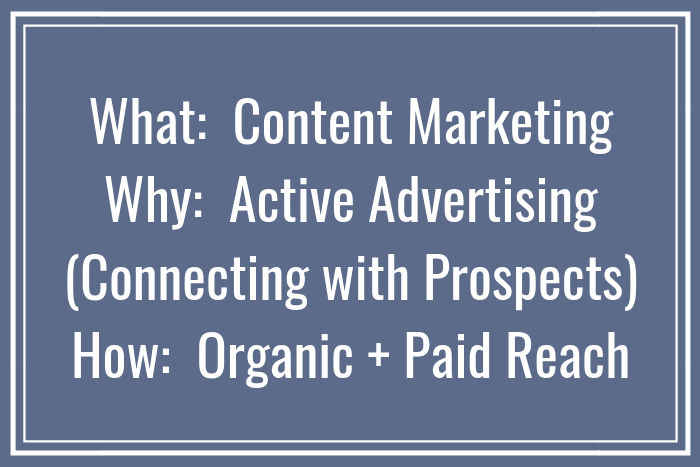
There are 4 main categories when it comes to content:
- Pages: text-based content with basic information.
- Publications: text-based content with advanced and/or in-depth information.
- Graphics: visual content (still images).
- Videos: visual content (moving images).
Some of the most common types of content for each of the four main content categories include:
| Blogs | Featured Images | White Papers | Explainer Videos |
| Landing Pages | Infographics | eBooks | Commercials |
| News Articles | Motion Graphics | Press Releases | Social Media Videos |
| Ad Copy | Animations | Manuals/Guides | How-To Videos |
What is the purpose behind content creation?
In our view, when it comes to florist websites, there are 3 purposes that are relevant:
- To inspire visitors to your site — i.e. potential customers — thereby creating an emotional connection.
- To educate visitors to your site, thereby demonstrating your expertise and creativity and showing them that they can feel confident that calling your flower shop is the right choice to make.
- To increase traffic to your website — which hopefully leads to an increase in the volume of sales inquiries that you receive.
(There are other reasons why someone may choose to create a piece of content, like entertaining audiences, but they usually don’t apply to a florist website.)
Once a piece of content has been made, it needs to be hosted somewhere. In most cases, you’ll host the content on your website.
Now, what happens next depends on the purpose of the content…
If the purpose is to compel visitors to your website to call your flower shop, once you publish the content, your only job is to monitor whether or not that piece of content is effective.
How do you do that? By installing Google analytics on your website if you haven’t already done so. You can see how long people spend on that page, and whether they click to your contact details page afterwards.
If the content is doing well, that’s fantastic.
Otherwise, you should experiment with tweaking the content. (As examples: re-write sections, add graphics or a video.)
Monitor whether the changes make a difference in how visitors respond to it. (Did they spend longer reading the page, or did they click on your contact page button more often?)
On the other hand, if the purpose behind a piece of content is to increase traffic to your website, you have a lot more work to do.
And we mean A LOT!
Now you are getting into the complicated realm of search engine optimization (SEO) and content marketing…
Anyways, more about that further on…
Chapter 12: Pros + Cons of Content Marketing
Pro: Unlike Digital Ads, Consumers LOVE Valuable Content
Have you ever heard the marketing expression: “Content is King!”
It means that content is THE most effective form of digital marketing.
Digital ads are no longer effective. Consumers are tired of them and tune them out.
But give consumers information that’s helpful, inspiring or practical, and you’ll have their full attention!
Now, producing useful content doesn’t have to be difficult…
For example, you could have a blog post on your website that answers the top 10 most common questions that your business gets asked by your customers.
As another example, you could have a resources page with links to other content on the web that your customers would find helpful.
For example, if you sell funeral flower arrangements, you could link to relevant content on funeral planning. As another example, if you sell sympathy flowers, you could link to content on how to support someone who’s grieving.
No matter what your areas of specialty when it comes to floral arrangements, your website visitors will appreciate that you took the time to craft a curated collection of the best information out there on the web that they can read when it’s convenient for them.
Con: Producing & Promoting Content that Ranks Well on Search Engines is Expensive
Under the “pro” section above, we’re really talking about content that’s designed to resonate with visitors who are already on your website. Since you have their attention, the goal is to get them to take the next step, which is to call you!
We’re confident that the average florist business is able to provide content that shows visitors that they will go the extra mile to be helpful and are true experts when it comes to creating beautiful and creative flower arrangements.
Now, producing and promoting content for the purpose of bringing visitors to your florist website is another story…
The truth is that it’s INSANELY DIFFICULT to get first page rankings for content targeting competitive keywords.
To create — and then rank — just one piece of valuable content requires a team of experts and a killer strategy.
We’re going to reveal what it really costs to create and promote content for a competitive keyword that’s able to reach potential customers.

You can see just how time-consuming — and expensive — it is to create valuable content that ranks well for a popular keyword.
Even if you do invest time and money, there is still no guarantee that you’ll get it right. Love Lives On’s 2018 Industry Review found that 70% of content produced by florist businesses needed improvement in terms of search engine optimization (SEO).
Bottom Line
It’s a great idea to add some inspiring and educational content to your website for visitors who are exploring your site to read.
It will help them make an emotional connection with you and trust your expertise and creativity.
If time and budget allow, invest in marketing your very best content. (Medium-sized florist companies or larger are better positioned to invest significantly in content marketing.)
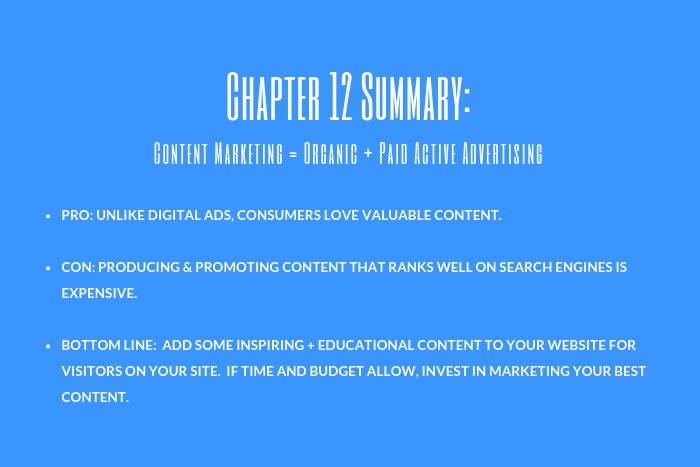
Additional Readings
Moz: Beginner’s Guide to Content Marketing.
Neil Patel: In-depth Guide to Content Marketing.
Tables Summarizing Flower Shop Advertising
Review Summary Tables that compare and contrast different options when it comes to digital marketing for florists.
Chapter 13: Introduction to Florist Marketing Using Online Directories
Now, let’s take a look at online directories…
Love Lives On’s 2018 Industry Review of 200 florist businesses found that 92.5% were listed in at least one online directory.
The 7.5% of florist businesses that weren’t listed in any type of online directory were either a start-up company or a very small business.
Obviously, online directories are a very popular — and easy —advertising method for florist businesses.
Given this, it makes sense for us to explore online directories as a method of flower shop advertising…
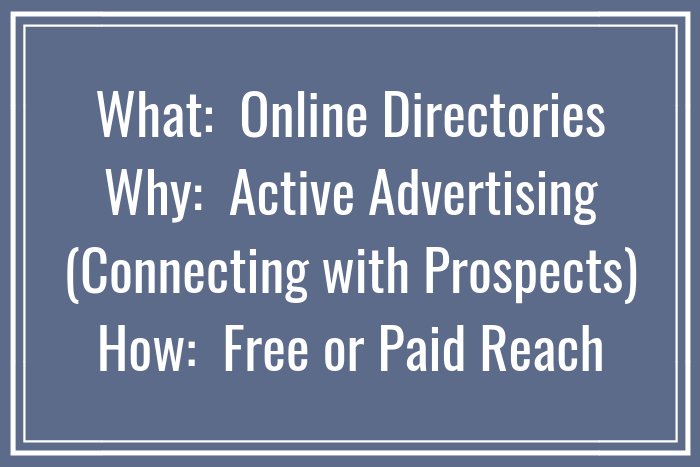
Online business directories have literally been around since the dawn of the Internet.
They are always going to exist because consumers love them.
Why? Because they have a high “ease of use.”
Directories make it quick and easy for consumers to research multiple businesses by visiting one convenient location instead of wasting time hunting around on the Internet.
Consumers also feel reassured that you are a legitimate business when you pay to be listed in a quality directory.
As a business owner, you should love directories too because directories help put you in the power position…
What do we mean by that?
Well, with most forms of flower shop advertising, you are trying to convince potential customers to call your business.
This sets a precedent for a sales process that places you in a position of need — which is a vulnerable position — and places the prospect in the powerful position of one who can fulfill that need.
On the other hand, with online directories, potential customers are searching for you because they believe that you, or a florist business like yours, can fulfill their need.
This change in who approaches whom dramatically alters the potential customer’s mindset.
When potential customers search for you (i.e. active advertising) — as opposed to you approaching them (i.e. passive advertising) — they are far more receptive to your message about what your flower shop offers.
There is a fundamental shift in how you are perceived.
You are no longer someone who is trying to sell them something for your own benefit. You are someone who can help solve their problem and whose advice they want.
This is very, very important to understand…
…because once you’re in a that position of power, it’s easy to lose it if you do not carry this persona all the way throughout your interaction with that person.
(If you want to learn more about how to maintain this power dynamic throughout the engagement process, we recommend reading “Never Cold Call Again!” by Frank Rumbauskas Jr.)
Now, based on our 2018 research results, we’d guess that you’ve already listed your florist business in online directories…
(Of course, you’d want to take advantage of the fact that quality directories put you in the driver’s seat.)
And you may already be aware of the fact that there are 3 different types of online directories:
- Free directories
- General directories
- Specialty directories
What you may not be aware of is that the 3 types of online directories are not created equally…
Let’s explore each type further.
Chapter 14: Pros + Cons of Free Directories
Pro: Joining Doesn’t Cost You Anything
There is a plethora of online directories that don’t cost you anything to join, (or charge a small fee).
They’re pretty popular with business owners because they love getting something for free, or close to free.
Furthermore, a few years ago, joining as many free directories as possible was a legitimate search engine optimization strategy…
Business owners used to receive backlinks from free directories which help boost their website’s ranking.
(But before you run off in order to search for free online directories, keep reading because things have changed dramatically…)
Con #1: No Human Oversight, Which Leads to Spam
When they first came about, a directory listing gave a business website a boost in Google’s ranking system.
They were designed to be easy to setup, allowing businesses to sign up directly online. It was all automated, no need for human oversight.
Everybody’s happy.
But over time, businesses began to cotton on to the power of external links. The more links the better!
They started signing up for every directory they could find.
They started gaming the system.
They would enter their business into every conceivable category, even if it was completely irrelevant to their business.
They figured, if one link is good, 100’s are even better. Pretty sound logic.
For a while this strategy worked and was the accepted practice.
Then spammers started creating programs called bots that would trawl the web and sign up a business in thousands of places.
Because directories didn’t have a manual sign-up process with human oversight, the bots swamped them.
As you can imagine, over time free online directories became a HUGE mess.
Consumers were no longer loving these overstuffed directories.
They’d be searching a directory site for wedding flowers, but instead would find listings for welding equipment.
Here’s an example of a free online directory page filled with garbage:
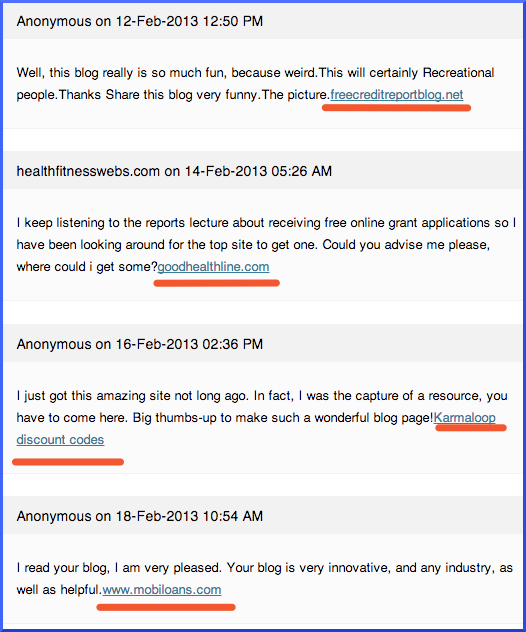
As a result of not having a manual submission process managed by real people, these kinds of directories are filled with lots of junk and not helpful for consumers.
Today, Google and other search engines consider free or low-cost directories to be SPAM.
Con #2: Your Website is in Danger of Getting Black-Listed by Google
Once Google noticed a rapid decline in the quality of free directories, Google started heavily penalizing both the directories AND the business websites that sign up with them.
And how they penalize a website is to drop the site’s position in the search results, or not display the site at all (i.e. blacklist it).
Ouch!
Now, we’d love to say that these low-quality directories don’t exist anymore, but unfortunately, that’s simply not the case.
They’re still pretty popular on the Internet, mainly because a lot of them are free, or practically free.
So unsuspecting business owners, who have no idea about Google penalties, continue to sign up.
Jon Morrow, Founder of SmartBlogger, shares that some years ago his website was blacklisted by Google because he signed up for “a bunch of shoddy link directories.”
“At the time, I didn’t know any better. I thought everything I was doing was totally legitimate.
“With Google though, ignorance is no excuse. You break the rules, you pay the consequences. End of story.
That’s why it’s so important to learn what the rules are,” says Marrow.
Recovering from Google penalties is a steep hill to climb. It’s tedious and expensive work to get your website ranking well again.
Bottom Line
Don’t join directories that don’t have a manual submission process because it’s not worth the risk.
Don’t be lured by the promise of “free” because it certainly won’t be free to do the work required to recover from Google penalties!
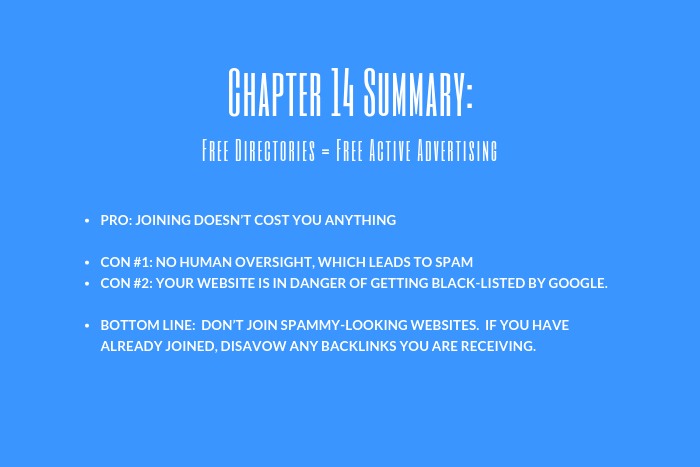
Additional Readings
Ahrefs: An In-Depth Guide to Link Quality, Link Penalties and “Bad Links.”
Google Support: How to Disavow Spammy or Low-Quality Backlinks.
Tables Summarizing Flower Shop Advertising
Review Summary Tables that compare and contrast different options when it comes to digital marketing for florists.
Chapter 15: Pros + Cons of General Directories
There are a few “big name” directories out there that you can pay to list in. (We’re sure a few well-known brands come to mind.)
They are general “catch-all” directories because they cover every business category known to man.
What are the pros and cons of paying to advertise your florist business in one of these general directories?
Let’s find out…
Pro #1: They Have a Manual Submissions Process (i.e. Quality Control)
A big pro is that “big name” general directories have a manual submissions process, meaning that there are quality control measures in place and human oversight.
In other words, consumers won’t find welding equipment when they’re searching for wedding flowers.
Pro #2: They’re Free of Spam
Consumers appreciate a well-organized, spam-free directory.
They have a high “ease of use” that makes online research much less time consuming than it would otherwise be.
Con #1: They Can’t Provide the Content that Consumers Want and Expect
Today’s busy consumer expects to be provided with quality content by a directory website — not just business contact details.
Since Google will always pay attention to what users want, general “catch-all” directories have a big problem moving forward.
They literally have thousands of business categories and potentially millions of listings.
How can you produce quality content for every type of industry and listing?
You can’t.
We’ll have to wait and see whether or not general directories survive long-term…
Con #2: Big Name Directories Can Be Expensive
A huge downside of “big name” general directories is that they are SUPER EXPENSIVE — $$$ — if you get anything more than the most basic of listings.
In large cities, it’s not uncommon to be charged $10,000+ per year for a modest listing, and $20,000+ per year for a larger listing.
Bottom Line
Keeping advertising with a general directory if you are getting leads at a price that makes sense for your florist business.
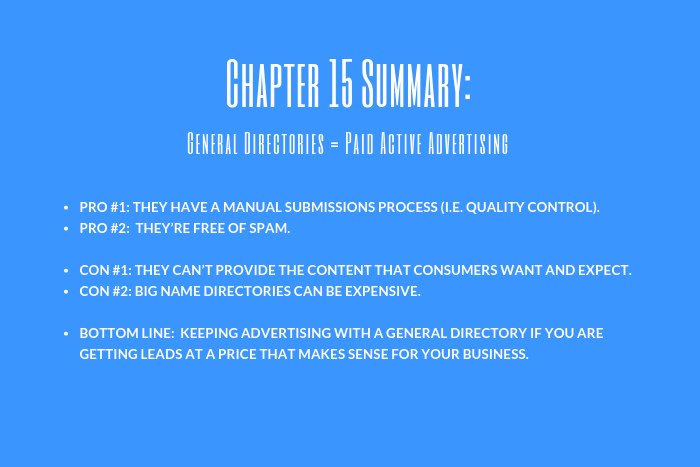
Additional Readings
Nick Stamoulis: The Real Cost of a General Directory Listing.
Marcus Sheridan: 11 Reasons to Avoid General Directories.
CBC News: General Directory Sued for Bullying Businesses into Paying for Better Reviews.
Entrepreneur: Good Reasons to Join a “Big Name” Directory.
Tables Summarizing Flower Shop Advertising
Review Summary Tables that compare and contrast different options when it comes to digital marketing for florists.
Chapter 16: Pros + Cons of Specialty Directories
Unlike general directories that literally list millions of businesses, specialty directories focus their attention on promoting a select few businesses within a particular industry.
The business directory on our site — LoveLivesOn.com — is an example of a specialty directory.
Since the highly-ranked content on our site is about funeral planning and grief, it only makes sense that our directory showcases relevant businesses.
Our millions of visitors want an easy way to find reputable professionals in their area — like florists — in addition to the top content we provide.
Of course, we’re not the only specialty directory on the web…
There are other specialty directories for other industries. For example, there are many specialty directories focused on the wedding industry.
(But as far as we are aware, we’re the only specialty directory for families who have suffered the loss of a loved one.)
Pro #1: Specialty Directories are Lead-Generation Powerhouses Because They Provide the Content that Consumers Want and Expect
Niche websites are able to produce top quality content that their target audience wants, which general directories are unable to do because they include every type of business imaginable.
As an example, the content on Love Lives On ranks on page 1 of search results for 500+ keywords related to funeral planning and grief.
We’ve also noticed that many specialty directories in the wedding industry have top-ranking content related to wedding planning and honeymoons.
If you are a flower shop owner, or are responsible for devising a marketing strategy for a floral business, listing in a specialty directory brings the business to the attention of families who are actively searching for funeral flower arrangements and sympathy bouquets at a time they’re ready to make a purchasing decision…
…which makes people that utilize specialty directories highly-viable sales prospects.
Pro #2: Consumers Love Specialty Directories
Niche websites like Love Lives On that offer in-depth, quality content, in addition to a business directory that only promotes reputable businesses, are popular with consumers.
Our MILLIONS of visitors tell us that they love that we’re a one-stop-shop. They no longer have to scour the Internet in order to find all the information they’re searching for.
This is why specialty directories are one of the most powerful forms of active advertising.
Potential new customers are looking for you on sites like ours because they believe you’re able to help them with their flower needs, like casket sprays, standing sprays, wreaths, and sympathy bouquets.
Chris Smith, President of Argent Media, advises: “Special interest groups of consumers seem to have a higher level of dedication towards businesses supporting their communities…”
“So, if your business qualifies for inclusion in a specialty directory, you should seriously consider paying up to be in it.”
Pro #3: Manual Submissions Process (i.e. Quality Control)
Any quality directory is going to have a manual submissions process managed by real people, not algorithms.
We touched on why this is important earlier…
A manual submission process ensures that over the long-term the directory does not become a repository for spam or disreputable businesses.
A specialty directory protects:
- Your business brand from being associated with a low-quality website.
- Your business website from Google penalties.
- Your business reputation. With a specialty directory, there’s no danger that your flower shop ads will be seen alongside content that prompts hate, terrorism, or anything else that’s undesirable — unlike advertising with YouTube — which we discussed earlier.
Pro #4: Easiest Form of Digital Advertising
Unlike other forms of marketing, listing in a specialty directory requires no technical know-how on your part.
Setting up this form of flower shop advertising couldn’t be easier. After you supply the information that you want to appear in your listing, there’s nothing else you need to do except let your listing work for your florist business 24/7.
Pro #5: Lowest Cost Per Lead
Specialty directories offer the lowest cost per lead (CPL), hands down.
Remember, CPL is a metric of how much it costs your florist business for one potential customer to take some form of action after seeing your advertising — like calling your flower shop, filling out a contact form, visiting your flower shop in person, or making an online purchase.
Remember also that not every person who sees your flower shop ad is going to take some form of action. They may have not found your ad persuasive, or may have preferred a competitor’s ad.
A recent study found that on average, in large cities across all industries, it costs $46 per lead through Yellow Pages and $88 through Google Ads.
It costs, on average, $7.80 per lead through Love Lives On Business Directory for large cities.
In other words, Yellow Pages on average costs 6 X more than Love Lives On…
…while Google Ads costs 11 X more than Love Lives On for that same lead.
Specialty directories offer the lowest cost per lead not just for florists, but for all types of businesses.
For example, if you offer wedding flower arrangements, we’d also be recommending that you join specialty wedding directories since a wedding lead with them typically costs $5 to $25.
The bottom line is that no matter what industry or industries your business serves, listing with specialty directories will generate great leads at the lowest possible price.
Con #1: Don’t Join if Your Flower Shop has Zero Competition
If your florist business is the only one in town and has zero competition, you probably don’t need to invest in any form of online marketing.
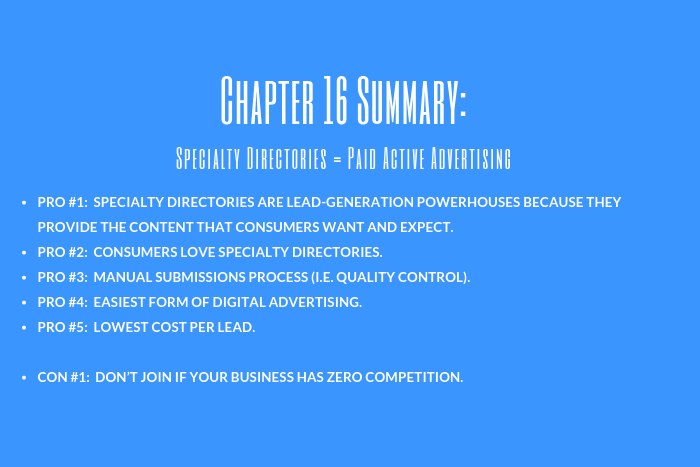
Bottom Line
Specialty directories are great for florist businesses of all sizes that are looking to grow their customer base.
They are aligned with the current direction that the Internet is heading in — namely, tying valuable content with advertising.
Additional Readings
Moz: Conquer Link Directory Best Practices for SEO
Search Engine Journal: Why Google Likes Niche Directory Sites.
Tables Summarizing Flower Shop Advertising
Review Summary Tables that compare and contrast different options when it comes to digital marketing for florists.
Chapter 17: Why Funeral Flowers and Sympathy Bouquets are Growing Markets
Weddings and funerals are two major life events where families spend a significant amount of money on flowers.
However, while the number of weddings per annum are significantly declining in most western countries — including the USA, UK, Canada and Australia — death rates are on the rise because of an:
- Increased number of deaths by suicide
- Increased number of drug and alcohol-related deaths
- Increased rates of cancer
- Aging population
For a florist business, now is a good time to advertise your expertise in creating beautiful and personalized funeral flower arrangements — like casket sprays, standing sprays, wreaths and pallbearers boutonnieres — along with sympathy bouquets.
Love Lives On’s 2018 Consumer Survey found that families of the deceased spend between $300 and $800 on funeral flower arrangements, depending on the size and number of arrangements, the type of flowers selected, and local rates.
Our survey also found that people typically spend between $50 and $80 on a sympathy bouquet for the bereaved family of the deceased.
We also found that for funerals of older people (aged 80 years or more), there are between 10 to 50 guests. For funerals of younger people, there are between 75 to 200+ funeral guests.
Love Lives On’s 2018 Consumer Survey found that a single funeral results in the grieving family receiving sympathy flowers with a retail value of between $750 and $2,800.
Finally, our survey found that consumers search for florists during this sad time by specifically searching for florists that advertise that they make funeral flower arrangements and sympathy bouquets. Consumers search online by entering keywords specific to funerals and sympathy.
Consumers indicate that they much prefer using a florist business that specifically advertises itself as a funeral and sympathy flower specialist than a “general” flower shop.
Consumers believe that funeral flower arrangements (e.g. casket sprays and wreaths) are more complex to make than everyday bouquets, requiring a special skill-set. Consumers also believe that a florist who specializes in sympathy flowers will ensure that they don’t send an inappropriate bouquet.
Servicing this growing niche market may present a great business opportunity for your florist business. If you are interested in tapping into this strong revenue stream, consider joining our popular Business Directory.
Besides our heavy traffic, it’s important to note that since our website is all about the importance of funerals and how to personalize a service, the millions of visitors who use our website and its business directory are people who will invest in creating a memorable event.
Our visitors are people who understand the value of having beautiful flower arrangements — and are ready to make a purchasing decision — making them highly-desirable sales prospects.
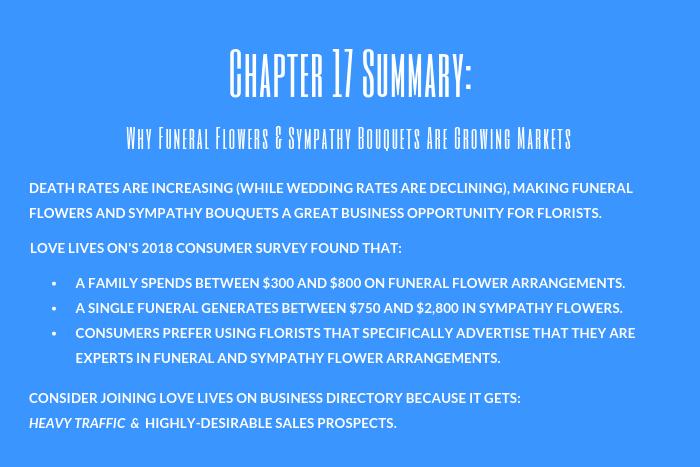
Chapter 18: Conclusion on Florist Advertising
We hope you found this Ultimate Guide on Florist Advertising useful.
When it comes to flower shop advertising, it’s always a good idea to diversify your online advertising as much as your budget allows because potential new customers search for flowers in different ways.
Being present online in multiple places — e.g. your website; with Google Ads; listing in General and Specialty Directories — significantly increases your chances of connecting with potential customers…
…whereas, confining your online presence to just one place — e.g. your website or business Facebook page — is putting all of your eggs in one basket.
If you’re interested in learning more about how our specialty directory can help your florist business easily gain more customers, please click here or click on the image below.

